“It’s been a whirlwind for the last four years”: Healthcare real estate market in the Twin Cities remains in flux
By Dan Rafter, Editor

The last four years? They’ve been challenging ones for healthcare providers and the brokers and developers working in the healthcare real
First there was COVID, which, as it did with all industries, injected chaos into the delivery of healthcare services. Since then, medical providers have faced nursing and doctor shortages, declining reim-
bursements and higher costs both for building new facilities and delivering care.
The higher interest rates that came in late 2022? Those didn’t help, either.
Still, despite these challenges, the healthcare real estate sector in the Twin Cities market remains a busy one, with tenants still actively looking for space and investors once again considering sinking their dollars into healthcare facilities.
Much of this demand stems from the ways in which patients receive medical care today. Instead of traveling to a central hospital, more patients are seeking care, even for more intensive procedures, Healthcare to page 22
Twin Cities’ industrial sector settling into a new normal
By Dan Rafter, Editor
Industrial development, sales activity and leasing all dipped during the first quarter of 2024 across the country. And in the Minneapolis-St. Paul market? CRE professionals working this sector saw the same thing: Demand for industrial space has finally cooled. That doesn’t mean that the industrial market is struggling in the Twin Cities. It just means that it has returned to a more normalized state. The activity lev-
els that this sector saw in 2020 and 2021 were not sustainable or normal.
Part of this is connected to the higher interest rates that have hit the commercial real estate market since 2022. These rates make it more expensive for investors to borrow the money they need to acquire all commercial assets, including industrial real estate. And while the Federal Reserve Board has indicated that it will no longer increase its benchmark interest
rate, it hasn’t slashed this rate, either. And that has kept other interest rates higher, too.
What does that mean for the industrial sector in the Twin Cities today? Joseph Mahoney, senior director with Opus Development Company, said that there is still demand from both investors and tenants for industrial space here. That demand, though, has cooled to pre-2020 levels.
©2024 Real Estate Publishing Corporation April 2024 • VOL. 41 No. 3
Industrial to page 28
The exterior of Highland Bridge Medical, a two-story, 60,000-square-foot multi-tenant medical office building, in Saint Paul, Minnesota. (Photo courtesy of Ryan)
estate sector.
Ann Duginske Cibulka, vice president of real estate development for healthcare at Minneapolis-based Ryan Companies, said that demand for healthcare space remains strong throughout the Twin Cities market.
Finalists and Winners! Page 38
local approach BWBMN.COM Member FDIC Discover Bridgewater Bank. to banking. A refreshingly

3 CONTENTS April 2024 1 A four-year whirlwind for Twin Cities healthcare real estate market 1 Twin Cities’ industrial sector settling into a new normal 4 Forte Real Estate Partners’ Steve Brown: The only constant in healthcare real estate? Change 6 Minneapolis the latest to benefit from the rise of the sports-entertainment district 8 Falling valuations and their impact on tax revenue in the Twin Cities 10 Women in Construction Week: Mortenson’s Leslie Seppamaki 12 Women in Construction Week: RJM Construction’s Tatiana Murphy 14 Another hit to owners: The costs of owning apartment buildings keep rising 16 VTS survey: More than 80% of office landlords seeing an increase in lease renewals 18 Workers turning to part-time employment and second jobs for relief 20 Technology dominates talk at National Multifamily Housing Council annual meeting 38 Special Section: 2024 Minnesota Commercial Real Estate Awards Minnesota Real Estate Journal Copyright © 2024 by the Minnesota Real Estate Journal is published bi-monthly for $85 a year. 7767 Elm Creek Boulevard, Suite 210, Maple Grove, MN 55369. 952-405-7780. For more commercial real estate news and information, please visit our website www.rejournals.com ©2024 Real Estate Publishing Corporation. No part of this publication may be reproduced without the written permission of the publisher.
President | Publisher
Jeff Johnson jeff.johnson@rejournals.com
Managing Editor Dan Rafter drafter@rejournals.com
Senior Vice President Jay Kodytek jay.kodytek@rejournals.com
Chief Financial Officer Todd Phillips todd.phillips@rejournals.com
Art Director | Graphic Designer Alan Davis alan.davis@rejournals.com
Managing Director
National Events & Marketing Kaitlyn LaCroix kaitlyn.lacroix@rejournals.com
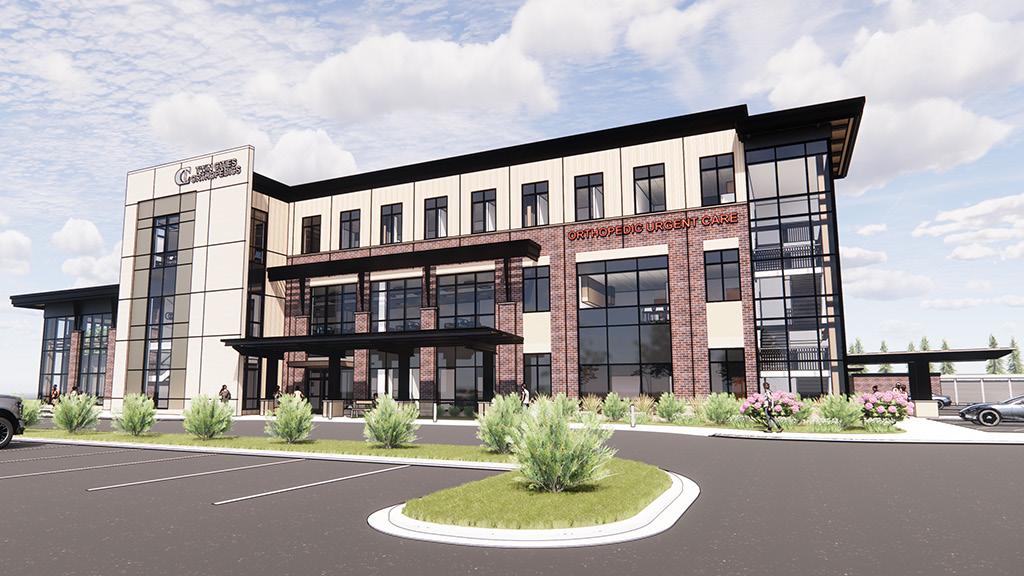
Forte Real Estate Partners’ Steve Brown: The only constant in healthcare real estate? Change
By Dan Rafter, Editor
S7767 Elm Creek Boulevard, Suite 210 Maple Grove, MN 55369
For information call 952-885-0815
EDITORIAL ADVISORY BOARD
JOHN ALLEN
JEFF EATON
MARK EVENSON
PATRICIA GNETZ
TOM GUMP
CHAD JOHNSON
BILL WARDWELL
JEFFREY LAFAVRE
WADE LAU
JIM LOCKHART
DUANE LUND
CLINT MILLER
WHITNEY PEYTON
MIKE SALMEN
teve Brown began his career in commercial real estate in 1985, when he began working for boutique real estate company American Commercial Properties. While there, Brown began representing medical practices, a side of his business that continued to grow.
Today, Brown is principal of Bloomington, Minnesota-based Forte Real Estate Partners, and is one of the leaders in the Twin Cities’ healthcare real estate market.
Minnesota Real Estate Journal tapped into this wealth of experience during a recent interview with Brown. This industry veteran shared his thoughts on the state of the healthcare real estate market in the Minneapolis-St. Paul region and the constant changes hitting this sector.
Here is some of what Brown had to say.
How challenging has it been for your medical clients during the past several years?
Steve Brown: They faced supply chain issues that caused construction costs to go up. These supply chain issues also delayed the timeline for completing construction projects. Land costs have risen dramatically. Then throw in the interest rate increases that occurred. That all made the cost of new construction prohibitive for many medical providers. There are plenty of providers who wanted to expand during these last four years but couldn’t afford to do it.
On top of that, I’ve had clients who’ve said that even if they had a facility that they could move into, they didn’t know if they had the right number of professionals to staff it. That’s another layer to the challenges that medical providers are facing today: The burnout of nurses and physicians has led to a lack of staffing.
The staffing issue is a serious one. Go to an urgent care. They’ll tell you that they’re backed up. Go to the emergen-
cy room. They’re backed up, too. Where do you go to get care?
Even with these challenges, do you think we’ll see more leasing, development or sales activity in the Twin Cities healthcare real estate market this year?
Brown: I have clients who want to expand. But they must find real estate that they can afford to buy. Real estate becomes a fixed cost. Staffing? They can modify that. If they buy real estate when the price is high, they are stuck with that cost for a long period.
Medical providers dealt with the fast increase of interest rates. That is what put the brakes on the development world. It was a sudden stop: Providers couldn’t afford to build new construction. They couldn’t afford to buy new real estate. Everyone was used to having cheap money and easy access to capital. That has now changed.
The real estate world has to adjust. Is this the new normal? We are not going back to the days of free money. These rates look bad in comparison to what we saw in 2020 and 2021. But historically, they are not bad. One of the things that healthcare providers have to figure out is if this is the new norm. And if it is, how can they conduct business in it?
There is another challenge, too. On Wall Street, healthcare has become its own food group. Wall Street wants a higher rate of return. That has an impact on the rents you need to charge and the profits that you need to make. It’s a bit like a perfect storm.
I think we will see providers get creative, though. They will find creative ways to save money.
What about conversions? Will we see more medical providers moving into and converting office that wasn’t originally built for healthcare use?
MINNESOTA REAL ESTATE JOURNAL April 2024 4
Forte to page 30






MINNESOTA REAL ESTATE JOURNAL April 2024 5
energy projects, simplified. New and Existing System O & M Turnkey Solar Projects Electric Vehicle Infrastructure Battery Storage Call (952) 698-1705 or visit bluehorizonenergy.com/development Blue Horizon Energy partners with commercial property owners and managers to design, build, and maintain solar and energy storage projects that achieve any number of goals. Point your camera phone at this code to see solutions we've delivered and what we can do for your properties.
Complex clean
The rise of the sports-entertainment district: Minneapolis the latest to benefit from this trend
By Dan Rafter, Editor
The Nationwide Arena District in Columbus, Ohio. The District Detroit. The Deer District in Milwaukee. And, of course, the Wrigleyville neighborhood surrounding Chicago’s Wrigley Field, home of the Cubs. These are all thriving sports-entertainment districts that have brought new life to urban areas throughout the Midwest. Now you can add North Loop Green in Minneapolis to this list.
North Loop Green, which officially opens this summer, is bringing a 1-acre activated green space, dubbed The Green, to an area of downtown Minneapolis located between the Cedar Lake Trail and Target Field, home of the Minnesota Twins. The goal is for this area to serve as a town square for Minneapolis’ North Loop section of downtown, and to give fans attending Twins games, and nearby residents, a wider range of activities to enjoy in the neighborhood.
North Loop Green is also bringing 350,000 square feet of office space, 350 residential units, 100 hospitality units and 15,000 square feet of premier food and beverage offerings.
Global real estate firm Hines has collaborated with partners Marquee Development and the AFL-CIO Build Investment Trust on the construction and opening of North Loop Green. JLL is serving as the leasing agent for the office component of the development. The architect of record for the project is ESG Architecture and Design, while Kraus-Anderson served as North Loop Green’s general contractor.

Eric Nordness knows how effective sports-entertainment districts can be in pumping life into urban areas. He’s managing principal for Marquee Development, which has worked extensively on additions to Chicago’s Wrigleyville neighborhood.
He said that North Loop Green will bring new activity to Minneapolis’ North Loop neighborhood, even when the Twins aren’t playing.
“North Loop Green is an amazing location,” Nordness said. “It’s a vibrant neighborhood. It has that live/
work/play environment that everyone wants. There isn’t a lot of open space there. But there was this left-behind space because of the urban constraints of rail and highway. It left us with a pretty cool way to create a green space and invite the neighborhood to use it as its park.”
Nordness sees the green space portion of North Loop Green as a place for urban residents to decompress during an otherwise busy day. They can sit on a bench, read a book or sprawl out on the grass.

MINNESOTA REAL ESTATE JOURNAL April 2024 6
BUILDING WHAT MATTERS Your partner for direct real estate investment Roers Companies is a multifamily real estate investment firm powered by in-house development, construction, and property management. We partner with individual investors to build institutional-scale apartments in high-demand neighborhoods across the nation. NO OFFER OF SECURITIES; DISCLOSURE OF INTERESTS: Under no circumstances should any material on this website be used or considered as an offer to sell or a solicitation of any offer to buy an interest in any investment. Any such offer or solicitation will be made only by means of the confidential Private Placement Memorandum relating to the particular investment. Access to information about investments with projects undertaken by Roers Companies LLC, Roers Companies Project Holdings LLC, or any of their respective affiliates is limited to investors who either qualify as accredited investors within the meaning of the Securities Act of 1933, as amended, or those investors who are generally are sophisticated in financial matters, such that they are capable of evaluating the merits and risks of prospective investments. Investment outcomes vary. Past success does not guarantee future results. Learn more at roerscompanies.com/investment North Loop Green is scheduled to celebrate its opening this summer in downtown Minneapolis. (Images courtesy of Marquee Development.)
District to page 31

Falling valuations and the impact on tax revenue
By Andrew Babula, director of the Real Estate Program at
the University of St. Thomas, Opus College of Business; Brayden LeLoup, University of St. Thomas student, pursuing BS in Real Estate Studies; and Madi Dulon, University of St. Thomas student, pursuing BS in Real Estate Studies
In recent years, there has been a notable decline in the occupancy rates of office buildings in metropolitan areas across the nation, attributed in part to the accelerated transition from traditional in-person office work to remote and hybrid models, propelled by the challenges posed by the Covid-19 pandemic.
A portion of this workforce has begun to return to physical office spaces as companies institute backto-work policies and pandemic-related restrictions gradually begin easing. However, occupancy levels in office buildings continue to lag significantly behind pre-pandemic levels.
In Minneapolis, the Central Business District (CBD) has faced challenges regarding office occupancy, worsened by safety concerns during the pandemic era. These factors have exerted additional pressure on the city’s efforts to facilitate a post-pandemic return to traditional office environments. According to the Minneapolis Downtown Council, there was a 56% increase in employees and businesses returning downtown over the past year. CBRE puts the daytime working population at just 65% of what the daytime population was before the pandemic (CBRE Demographic Comprehensive 2023).

The transition to work-from-home and hybrid employment models has prompted organizations to reassess their office space needs, leading to a trend of downsizing, and subsequent sublease of the space, or eliminating office footprints upon lease expiration. Presently, office vacancies within the Minneapolis CBD sit at 27.3%, a significant in-

remain uncertain, further reductions in office space are anticipated in the coming years as lease agreements expire. Investors and tax assessors evaluate the value of office buildings based on the net income generated by the property, which directly correlates with occupancy rates. Consequently, as occupancy diminishes within CBD office properties, so does the overall value of those properties. Moreover, given that property taxes are calculated as a percentage of property value, it follows that the decreased value of office buildings in the Minneapolis CBD will adversely affect the city’s tax revenue.
to page 32








MINNESOTA REAL ESTATE JOURNAL April 2024 8
HOUSING DEVELOPERS BUSINESSES SITE SELECTOR VISITORS HOMEOWNER & RENTER Chisago County Minneapolis-St. Paul Duluth St Cloud MN WI 94 94 35 694 694 494 35E 35 95 95 8 8 N IN PARTNERSHIP WITH OUR CITIES: Center City, Chisago City, Harris, Lindstrom, North Branch, Rush City, Shafer, Stacy, Taylors Falls & Wyoming. S T § § " × " × " × £ £ £
Tax
Image by Gerd Altmann from Pixabay

MINNESOTA REAL ESTATE JOURNAL April 2024 9
Women in Construction Week: Mortenson’s Leslie Seppamaki
By Dan Rafter, Editor
In honor of Women in Construction Week, which ran from March 3 through 9 this year, we are running profiles of some of the women who are thriving in the construction industry throughout the Midwest.
This includes Leslie Seppamaki, design phase executive at the Minneapolis office of Mortenson. Here are her thoughts on what it takes to build a successful career in what is still largely a male-dominated industry.
What led you to pursue a career in construction?
Leslie Seppamaki: In high school, I was interested in becoming an architect or engineer. My high school offered a mentorship program, and I was able to mentor with a friend’s dad who was an architect. During my mentorship, I met with a variety of disciplines in design and engineering.
The most inspiring meeting was with a female project manager for the architecture firm. We met on a project site where she toured me around the building that was in the middle of framing walls and MEP rough-in. I didn’t even know that project management could be a career path until I was on the jobsite and saw the possibility. From there, I went to ISU and majored in construction engineering in 2004 and have been in construction since.

What challenges have you faced in building a career in a male-dominated industry like construction?
Seppamaki: At the beginning of my career, I felt I needed to prove myself in my role and take as much responsibility as I could due to being one of a few females in the role. There were times where it was intimidating being in a room with all men leaders in


design, ownership, trade partners and internal team members so I had to be confident in my abilities. Trusting in myself and learning from my past experiences helped me with my confidence.
Have you noticed an increase in the number of women entering the construction industry? If so, why do you think that is?
Seppamaki to page 27
MINNESOTA REAL ESTATE JOURNAL April 2024 10
Accomplish more with Associa Minnesota. Contact us today! Eric Gronli Business Development Manager 763.225.6400 eric.gronli@associaminnesota.com THAT WORKS FOR YOU. Community management At Associa Minnesota, our top priority is keeping all aspects of your community running seamlessly. Whether it’s our top-tier management, secure accounting measures, reliable maintenance services, or expert project oversight, our complete and comprehensive suite of services make leading and living in a managed community better and easier than ever. Leave the hard work to us, so you can focus on what matters. 7100 Northland Circle N. Suite 300 Brooklyn Park, MN 55428 www.associaminnesota.com
Leslie Seppamaki on the jobsite. (Photo courtesy of Mortenson.)

MINNESOTA REAL ESTATE JOURNAL April 2024 11 In times of disruption, tried-and-true solutions won’t do. You need more — more innovation, broader perspective, keener foresight. We’ve learned this in our three decades of service to the real estate community. Through ups and downs. In good times and hard times. We’re ready to put our experience to the test again and help you find the way forward. Visit us at: MMBLawFirm.com WHEN THE WORLD TURNS UPSIDE DOWN, IT’S TIME TO REDRAW THE MAP
Women in Construction Week: RJM Construction’s Tatiana Murphy
By Dan Rafter, Editor
To celebrate this year’s Women in Construction Week that ran from March 3 through 9, Minnesota Real Estate Journal ran profiles of some of the women who are thriving in the construction industry throughout the state.
This year we are highlighting the career of Tatiana Murphy, project manager with RJM Construction in Golden Valley, Minnesota.
Here is some of what she had to say about building a career in the still mostly male-dominated construction industry.
What led you to pursue a career in construction?
Tatiana Murphy: I really fell into it. I was a financial analyst moving from California to Minnesota, and my brother-in-law mentioned Watson-Forsberg was looking for a controller but not for five years. They wanted me to fill a role as a project coordinator to learn how the industry worked. When it was time for me to start training to be the controller, I asked if I could move into an assistant project manager position instead. Ten years later, I still love what I do every day.
What challenges have you faced in building a career in a male-dominated industry like construction?
Murphy: I actually haven’t felt that being a woman has affected my career all that much to date. The biggest thing I have noticed is the subcontractors

that I have not worked with in the past are less responsive until they realize I am running the project and I know what I am doing.
Have you noticed an increase in the number of women entering the construction industry? If so, why do you think that is?
Murphy: Yes, I just mentored my first woman and it was exciting! I think we have opened our eyes and realized that we can do a difficult job just as well
as our male counterparts in the industry and have something to prove. Why should men have all the fun in this exciting industry?
What do you find most fulfilling about working in the construction industry?
Murphy: Solving the big problems. Digging into the root of the issue and knowing the right people

MINNESOTA REAL ESTATE JOURNAL April 2024 12
AREN’T BUILT ALONE. Every decision you make impacts not only your goals but also the employees and community you’re committed to. At Associated Bank, we’re beside you every step with the financial guidance, local market knowledge and rapid response you need to keep your life’s work growing. The more opportunities we open up together, the greater impact your business has. Learn more at AssociatedBank.com/CRE Deposit and loan products are offered by Associated Bank, N.A. Loan products are subject to credit approval and involve interest and other costs. Please ask about details on fees and terms and conditions of these products. Property insurance and flood insurance, if applicable, will be required on collateral. Member FDIC. (3/22) P05957.02
DREAMS
Murphy to page 27
Murphy has enjoyed her career for more than a decade. (Photo courtesy of RJM Construction.)






 Medical Property of the year
Medical Property of the year
Another hit to owners: The costs of owning apartment buildings keep rising
By Dan Rafter, Editor
Owning an apartment building? It’s getting more expensive, a challenge that multifamily owners should expect to face throughout the rest of 2024.
That’s the key finding from a Yardi Matrix special report released April 3.
According to the report, the expenses of owning multifamily properties rose by 7.1%, or an average of $593 a unit, on a year-over-year basis as of January of 2024. Yardi Matrix reported that multifamily owners spent an average of $8,950 on annual expenses, such as insurance payments and maintenance, from January of 2023 to January of 2024.
In a bit of good news? While expenses continue to increase, they are growing at a slightly slower pace. Yardi Matrix reported that annual expenses rose 8.7% from 2021 to 2022. That’s higher than the 7.1% year-over-year increase recorded from 2023 to 2024.
Expense growth varied by expense type and metropolitan area.
The cost of property insurance recorded the biggest jump, with Yardi Matrix reporting that this expense increased by 27.7% year-over-year. Next came marketing expenses, which jumped 12.3%; administrative expenses, which increased by 9.6

percent; and the cost of repairs and maintenance, which jumped 8.8%.
Of the 129 markets reviewed by Yardi Matrix, 99 recorded increases of 5% or more and 28 had increases of 10% or higher.
The markets seeing the biggest jumps in multifamily ownership expenses were Spokane (18.9%); Tallahassee (18.8%); Lafayette, Louisiana (18.1%); Portland, Maine (14.7%); and Pensacola, Florida (14%). Property owners in the Midwest and Texas
can at least celebrate that their operating expenses aren’t rising as high as they are in other markets.
The Southeast region of the country recorded the largest increase in costs, up 8.8%. Next were the West (7.3%), the Midwest (6.4%), the Southwest (6%) and the Northeast (4.7%).
By market size, tertiary markets posted the largest increase (7.9%) followed by secondary markets (7.1%) and gateway markets (5.4%).
Yardi Matrix analyzed nearly 22,000 properties that use Yardi software in preparing its costs report.
MINNESOTA REAL ESTATE JOURNAL April 2024 14
Creighton University congratulates Mark Rauenhorst for receiving the prestigious 2024 Minnesota Real Estate Journal Lifetime Achievement Award Congratulations to Mark Rauenhorst
Image by Gerd Altmann from Pixabay.

Even after the business day is done, you’re still thinking about your company. Trust the bank that’s right there with you. At Bremer Bank, we offer expert advice and financial solutions built around your needs so you can focus on what you do best. Put us to work for you. bremer.com
2024 Bremer Financial Corporation. All rights reserved. Bremer and Bremer Bank are registered service marks of Bremer Financial Corporation. Grow
business and bank with confidence.
©
your
VTS survey: More than 80% of office landlords seeing an increase in lease renewals
By Dan Rafter, Editor
Aslow recovery in the office sector? It’s better than no recovery at all. That’s the takeaway from VTS’ fifth annual Global Landlord Report released in early April.
And here’s the best news from the report: VTS says that more than 80% of office landlords surveyed said that they have seen an increase in lease renewals.
According to the latest VTS Office Demand Index, the national demand for office space marked its sixth consecutive month of annual growth in March. And VTS’ 2024 Global Workplace Report showed that 62% of companies are following a hybrid work strategy in which their employes work part time in the office and part time remotely.
This indicates a slow but steady recovery for the office market, according to VTS officials.
“We are witnessing a conviction for a strong return-to-office in 2024 in contrast to years prior, and while positive for the market, it is becoming increasingly crucial for landlords to remain competitive to meet the evolving demands of tenants for enriched, interconnected workspaces,” said Nick Romito, chief executive officer of VTS, in a statement.
Romito said that by putting the needs of their tenants first, office landlords are seeing more stickiness in leases, with fewer tenants leaving for better opportunities.
cording to VTS, office landlords this year are more concerned with boosting lease renewals by improving their tenants’ experiences than they are with leasing vacant space.
A total of 57% of respondents in VTS’ report said that they are focusing on retaining current tenants. How are they doing this? A total of 56% of landlords surveyed said that they are boosting their property management services and taking steps to enhance the experience of their tenants.
According to the report, landlords are twice as focused on property improvements this year as they are on portfolio diversification. The evidence for this comes in how office landlords are spending their dollars.
VTS found that landlords are increasingly investing in tenant experience technologies (cited by 33% of respondents), outdoor communal areas (31%), property operations (30%), food and beverage concepts (27%) and fitness centers (27%).
These efforts seem to be paying off. VTS reported that 82% of landlord respondents said that they are already seeing the length of office lease renewals either increasing or holding steady.
Another key finding from VTS’ report? Most landlords -- 84% -- said that they expect to invest more in technology in 2024 when compared to 2023. Only 4% told VTS that they expect their investment in
Property management software ranks as the top tech investment for landlords, with 44% of survey respondents citing it as their most important piece of technology. Next came leasing and asset management platforms, cited as a top investment choice by 33% of respondents, and digital marketing software, listed as a top choice of 26% of respondents.
In 2022, VTS found that only 4% of landlords were utilizing digital marketing software. That number spiked to 26% in 2024.
Social media ranks as the most powerful channel that office landlords use to find new commercial real estate tenants, with 33% of respondents saying that they have success with this method. On the other end of the spectrum? Landlords said that digital ads are the least effective method of finding new tenants.
VTS reported, too, that 34% of landlords spend more than $50,000 annually to create, maintain and update their digital web properties across their portfolio.
As in most industries, AI is expected to play an increased role in helping landlords manage their office properties. VTS reported that 45% of surveyed landlords said that they expect AI to help them make portfolio decisions, assist them in saving money on the operations of their properties and boost their marketing efforts.










MINNESOTA REAL ESTATE JOURNAL April 2024 16
DEVELOP DESIGN BUILD MANAGE dorancompanies.com

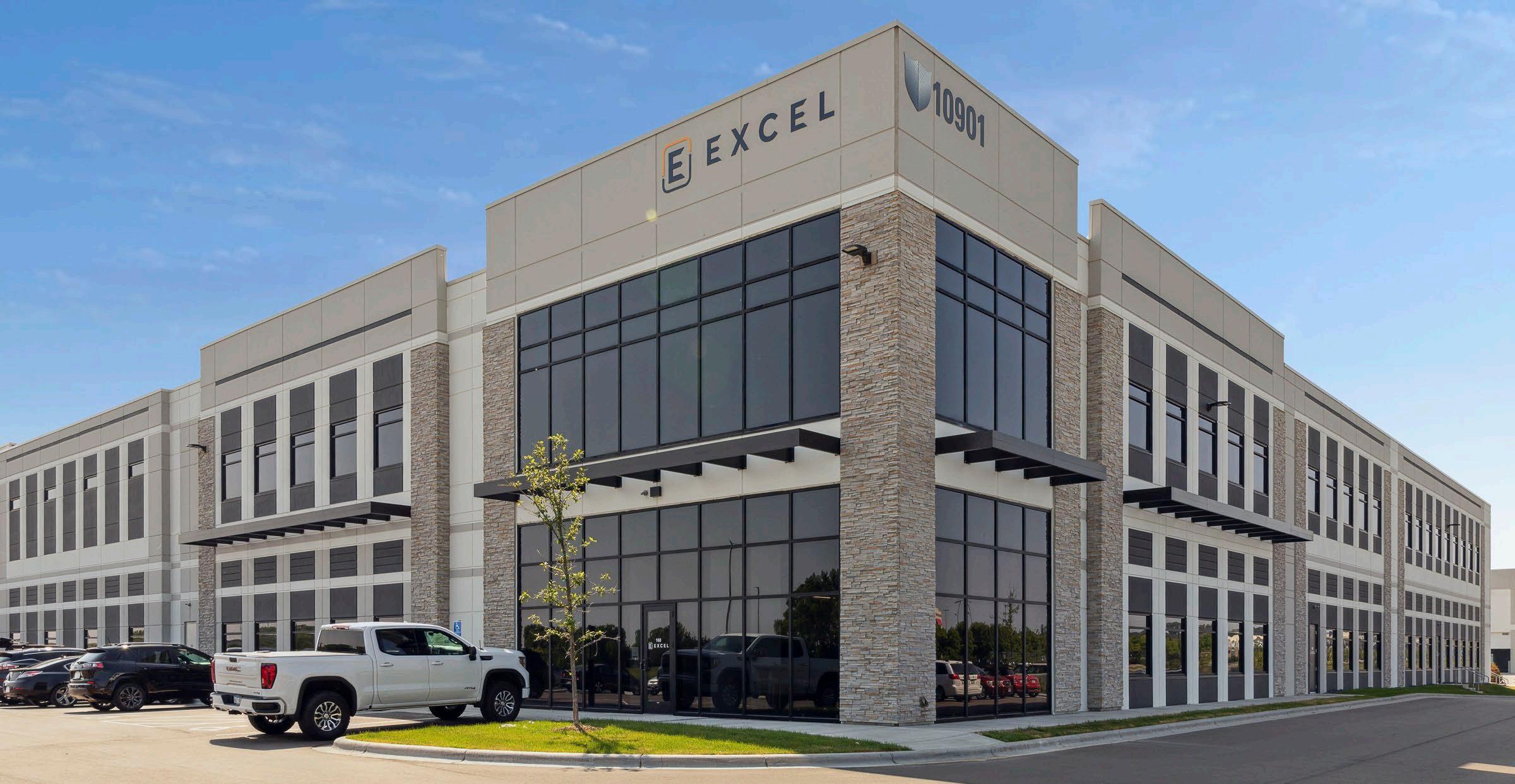

The need for industrial real estate has greatly accelerated. It is a specialized market that the Endeavor Development team knows well. We develop, acquire and manage industrial real estate assets using our thorough understanding of the current climate and landscape. Since our founding in 2020, Endeavor Development has developed over 3 million square feet of finished space and was recently named the 6th largest developer in 2023 based upon square footage developed.

MINNESOTA REAL ESTATE JOURNAL April 2024 17 Institutional Experience. Entrepreneurial Spirit. endeavorshield.com
Foster
Drive
Raise the Bar
Inspire Others
Build Partnerships |
Innovation |
Growth
|
Arbor Lakes Business Park
Yankee Doodle Business Center
With consumer spending up and savings down, workers turn to part-time employment and second jobs for relief
By John Beuerlein, Chief Economist at the Pohlad Companies
Many economic reports in March came in stronger than expected, justifying the Fed’s current stance of being patient in making the decision to lower interest rates. Despite the downward trend in inflation readings since June 2022, the “last mile” in getting inflation down to the Fed’s 2% target is proving to be more challenging.
The ongoing resilience of the economy causes the Fed to be less concerned about the lagged impact of the tightening of the past two years, and more focused on the potential impact of lowering rates too soon.
Inflation and consumer spending
The February Core Consumer Price Index (CPI) increased 0.4% for the second month in a row. Although the year-over-year core CPI edged down to 3.8% from 3.9%, the three-month annualized rate has accelerated to 4.2%. The headline CPI also increased 0.4% for the month, causing its year-overyear growth rate to increase from 3.1% to 3.2%.
The Fed’s preferred measure for inflation, the core Personal Consumption Expenditure Index (PCE), recorded a 0.3% increase in February and remained at 2.8% year-over-year. It should be noted that inflation indices often show stronger readings at the begin-

ning of the year due to many price adjustments that occur at the outset of a new year.
As for the consumer, despite a weaker than expected retail sales report, overall consumer spend-
ing was stronger than anticipated in February, driven by spending on services. The increase in spending occurred even though inflation-adjusted disposable

CHEERS TO THE GOOD LIFE
As Minnesota’s foremost senior living operator, Ebenezer offers over a century of expertise in elevating senior communities. Join us in raising a toast to the good life, where innovative management meets thriving communities.
Congratulations to our Ebenezer nominees! Nadette Waligora, Property Manager of the Year The Pillars of Lakeville, Senior Housing, Suburban East
MINNESOTA REAL ESTATE JOURNAL April 2024 18
A resident from The Pillars of Lakeville enjoys happy hour. ©2024 Fairview Health Services
LEARN MORE EbenezerManagementServices.com Co-Ops & Condominiums | Independent & Assisted Living Memory Care | Enhanced Care | Skilled Care | Adult Day
Photo by Eric Prouzet on Unsplash Workers to page 36

Technology dominates talk at National Multifamily Housing Council annual meeting
By Brad Lutz, Baker Barrios Architects
Earlier this month, I attended the National Multifamily Housing Council Annual Meeting and conference in San Diego. Among the dozens of presentations and insights shared during the event, there was one common theme: technology.
From AI to EVs to 3D printing, the multifamily industry is experiencing a tech-driven transformation unlike we’ve ever seen.
While some in the industry have been somewhat cautious of adapting new technology too quickly, concerned about the unknowns, I tend to take a more optimistic view of the possibilities in front of us. I found the future-facing ideas around technology presented at the NMHC conference exciting and am sharing two of my favorites below.
Applying AI
How might you design your multifamily property differently if you could predict the way residents would live in it? That was one of the many ideas that inspired me while listening to the engaging sessions on the topic of artificial intelligence.
This incredible technology is about so much more than chat bots. The data it can provide has the potential to inform decisions and operations throughout the lifetime of a multifamily project: site selection, programming and design, leasing, resident retention, property management and so much

more – ultimately boosting NOI and ROI by saving significant time and money.
From an architectural perspective, I’ve seen how AI can save time and money in the design process alone, creating schematic visuals in a fraction of the time it previously took. It allows us to trial different architectural scenarios with our clients in seconds,
rather than the hours or even days it used to take to create multiple rough schemes.
Another takeaway is understanding how imperative it is to incorporate technology on the front end of a project, rather than try to catch up and retrofit a property to incorporate it later. Even if a certain tech-forward element won’t be immediately implemented, having the necessary components or infrastructure incorporated in the design from the start allows the project to be ready for the future.
The NMHC Keynote Speaker Peter Diamandis, founder and executive chairman of the XPRIZE Foundation, said every company should have a Chief AI Officer, and I agree that this will be an essential role to leverage all this new technology in any business. At Baker Barrios, our take on the role is our Chief Creative Officer, Wayne Dunkelberger, who oversees our design-opps team.
We’ve invested years into research and testing of various AI and augmented-reality software and have developed a proprietary formula for utilizing tech throughout our architectural practice to yield more advanced and more successful project outcomes. As Wayne often notes, AI is simply a tool and is only as useful as the person operating it.
Given the prevalence of AI throughout society, it does make sense to have people on your team who know how to make the most of this tool, especially
MINNESOTA REAL ESTATE JOURNAL April 2024 20
Brad Lutz (Photo courtesy of Baker Barrios.)
Technology to page 37





MINNESOTA REAL ESTATE JOURNAL April 2024 21 Custom designed innovative technology solutions for commercial and industrial properties. InFocusSystems.com 952.929.0000 Two locations: St. Louis Park & St. Paul AUDIO/VISUAL ACCESS CONTROL DATA CAMERAS SECURITY VOICE WI-FI
Healthcare from page 1
at freestanding clinics or ambulatory surgery centers.
Because of this, both physician groups and healthcare systems are searching for healthcare space in both the cities of Minneapolis and St. Paul and their suburban communities, Cibulka said.
“The constant shift of patient care to outpatient services is a big reason for the steady demand for healthcare space,” Cibulka said. “As care comes out of the hospital and into more convenient outpatient centers in the community, we are seeing more demand for space throughout the market.”
At the same time, physician groups and healthcare providers are embracing new technology to assist them in treating their patients. Many occupiers, then, are searching for new, modern space that they can more easily equip with this tech, Cibulka said.
Then there’s the population growth in the Twin Cities suburbs. As more households form in these communities, medical providers are scrambling to fill the spaces that get them closer to these potential patients.
This doesn’t mean, though, that medical providers don’t face challenges that might make them cautious when searching for new locations, Cibulka said.
“Though demand is strong, there are a number of feasibility challenges facing physician groups and healthcare providers,” Cibulka said. “There is caution when it comes to growing because of these
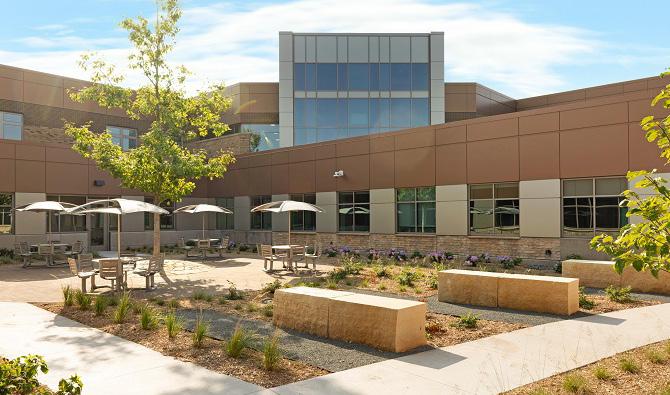
challenges. The reality of real estate today is that construction costs and inflation have occurred. There has been some relief in the last six months. But construction costs are still significantly higher than they were two years ago.”
Interest rates, of course, remain a key challenge for health systems looking to expand by either purchasing or building new real estate. The hope was that the Federal Reserve Board might cut its benchmark interest rate this year, maybe more than once. That hasn’t happened yet.
Creating Space for Success
Until rates actually fall, healthcare providers will remain cautious when expanding their real estate holdings.
“We are still at a new normal with interest rates that is driving up costs,” Cibulka said.
Steve Miller, vice president of development and acquisitions for Richfield, Minnesota-based MSP Commercial, said that he doesn’t expect investment sales activity to pick up until interest rates begin to fall.

MINNESOTA REAL ESTATE JOURNAL April 2024 22
As a unified real estate investment firm, Enclave’s development, construction and management teams create distinct spaces where partners, team members and communities thrive.
enclavecompanies.com Explore our Work
Healthcare to page 24
The courtyard of PrairieCare in Brooklyn Heights, Minnesota, provides a peaceful, outdoor retreat. (Photo courtesy of Ryan)
MINNESOTA REAL ESTATE JOURNAL April 2024 23
“It is helpful that the Fed has signaled that it won’t be raising its rate,” Miller said. “But I don’t think sales activity will really get un-gelled until there is momentum downward with rates.”
Miller said that buyers are more selective today and are scrutinizing potential deals more carefully. He doesn’t expect this trend to change anytime soon.
While costs have risen, the revenues of healthcare providers have been reduced, too. COVID, of course, played havoc with the revenue streams of providers. Medical providers also face rising nursing and staffing costs. The cost of supplies has risen, too.
The combination of falling revenues and increasing costs is making it more challenging for healthcare systems and physician groups to build stronger bottom lines.
“Healthcare systems have faced major headwinds. Reimbursements are not keeping pace with where the costs of delivering care have gone,” Miller said. “Labor costs have gone up. The cost of supplies has gone up. Everything has become more expensive. That makes it tough for these systems and has slowed growth and the flow of capital that would otherwise be used for relocations and expansions across the Twin Cities.”
A lot going on
Jon Lewin, principal and chief financial officer with Minneapolis’ MedCraft Healthcare Real Estate, said that the demand among tenants for healthcare space is still outpacing the supply available, both in the Twin Cities market and across the Midwest.
Lewin said that most of MedCraft’s healthcare real estate portfolio is leased up, with the exception being some space in older facilities built in the early 2000s.
This doesn’t mean, though, that leasing activity is brisk. Lewin said that while demand for healthcare space is high, medical providers and physician groups are actually moving slowly when making leasing decisions today.
That’s partly because the healthcare industry continues to see big changes in how patients want to access healthcare services. Medical groups are also struggling with lower profits today and higher costs, all of which means that they are carefully weighing their options before making a move today.
“The last four years, starting with the pandemic, have been a whirlwind,” Lewin said. “Some healthcare groups are expanding by buying independent practices. Some independent practices have spun back out of larger groups. Other medical groups are partnering with smaller physician groups. We have seen a flurry of new ambulatory surgery centers. There have just been a lot of factors in play.”
The good news for commercial real estate professionals working in the healthcare real estate sector? Medical providers understand that they can’t grow their profits or market share by cutting locations, Cibulka said.
“That is such an important message,” she said. “It’s important for providers to have strategies to improve their efficiencies and be innovative when it comes to being leaner. But strategies must be focused on the strategic growth of high-revenue operating systems. Groups still understand that growth is needed.”

Cibulka said that Ryan Companies is advising healthcare groups to look at real estate from a portfolio-wide perspective. Instead of focusing on individual acquisitions, providers need to evaluate their position overall in a market. The goal is to find high-revenue locations and expand those, Cibulka said.
They should also consider shedding low-revenue locations that are not producing, Cibulka said, and think about shifting their services to denser growth areas where they might enjoy a higher return of investment.
“As capital is constrained, providers have to be more data-driven on the decisions they are making,” Cibulka said. “They need to make more holistic real estate decisions.”
Cibulka points to a recent example. Ryan advised an existing client on a move from a small clinic in St. Paul to a larger, more modern facility across the street in the same market. By making even this short-distance move, the client would be able to offer more services, keep up with evolving technology and expand its market share.
The provider made the move and signed a longterm lease at the new facility, which allows it to compete with other healthcare providers in the same market that also boast more modern facilities.
“It’s about looking at facilities from a holistic perspective,” Cibulka said. “Even though you might have a location in a market, it might require new investment. This is a time in which groups need to get creative. These are tough financial times. To grow, they need to make strategic operational decisions.”
Healthcare to page 26


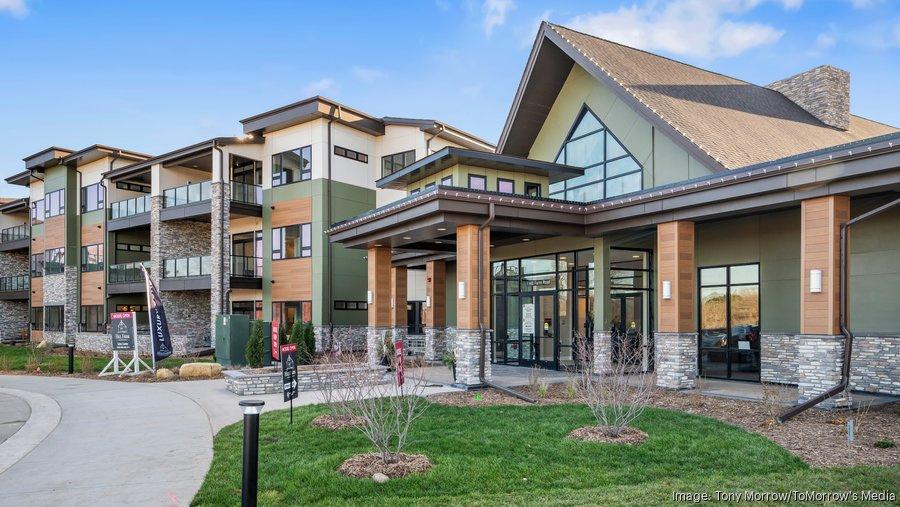

MINNESOTA REAL ESTATE JOURNAL April 2024 24
firmgroundae.com Celebrate FIRM GROUND design teams, our incredible clients, valued industry partners, and esteemed fellow finalists!
Healthcare from page 22


Congratulations Mark Rauenhorst on receiving
the Lifetime Achievement Award.

You’ve earned the trust and respect of many in the industry and your vision has changed the landscape of many cities across the country. We’re grateful for your many contributions and proud to carry on the legacy of the business that you were part of leading for nearly 28 years.

MINNESOTA REAL ESTATE JOURNAL April 2024 25
And it’s not just the cost of rent that matters, Cibulka said. Healthcare consumers are increasingly demanding higher-quality spaces in which to receive care. Medical providers that remain in outdated, unattractive facilities might find their patients gravitating elsewhere.
Miller said that private practices can act more quickly on finding the new, modern office space that patients are increasingly seeking. They understand that their profits are directly impacted by customers who are looking for nicer facilities.
Bigger systems, though, don’t make decisions as quickly. The decision-makers at these bigger healthcare providers also don’t feel the profit impact of opening a new, more modern facility as acutely as do the doctors operating private practices. These bigger systems, then, are less likely to leave older spaces than are smaller practices, Miller said.
“A group of doctors will see the benefit of opening a new facility and getting an influx of new patients because of that move,” Miller said. “For bigger healthcare systems, the people making the real estate decisions don’t necessarily experience the upside of such a move in the same way.”
And don’t expect patients to settle for outdated physicians’ offices any longer.
“The competition is fierce,” Cibulka said. “Consumers have a choice. Your physical base is incredibly important to the brand of an organization. Don’t just look at the cost of rent. What is the quality of care that you can provide and long-term ability to produce growth in that market? How is that facility servicing that vision?”
For healthcare providers, this often means a greater focus on building more ambulatory surgery centers, freestanding clinics and other outpatient facilities.
These satellite healthcare offices are no longer derisively referred to as “doc-in-a-box” centers. Instead, they have become key cogs in the portfolios of medical providers.
That’s partly because they are so popular. Lewin said that a growing number of patients view outpatient centers and ambulatory surgery centers as more pleasant places to receive medical care.
“More and more we are seeing procedures move to outpatient facilities, even small neurological and spine procedures that scare the living daylights out of you,” Lewin said. “Those procedures can now happen in a friendlier environment. There is still a difference when you walk into a hospital versus an outpatient center. The outpatient setting is more relaxed and casual versus a hospital that is more sterile, more chaotic.”
Miller said that medical providers are increasingly opening locations in suburbs that are further from the Twin Cities’ downtown core. Communities such as Woodbury, Lakeville and Maple Grove continue to receive attention from medical providers looking to expand their services.
“Do you want to go downtown for a minor procedure to a big hospital or stay in your neck of the woods?” Miller asked. “You’ll get free parking in the suburbs. You don’t have to go to a big lobby only to find out what hospital building you need to go to next. For patients, those inconveniences of a big hospital add up. It gets to be too many decisions for them to make. They want to avoid that stress,
and these smaller outpatient facilities help them do that.”
Office conversions a trend?
Some physician groups and healthcare providers are moving into pre-existing office spaces that were not designed originally for healthcare real estate. But not every empty office space can be converted to healthcare use, Cibulka said.
In some buildings, ceiling heights are too low. Others don’t have ample parking or are located too far from major highways or roads. Medical providers even need to consider the ability of pre-existing office space to handle the weights of their heaviest pieces of equipment.
“There are office buildings where it will work. We want to be as pragmatic and supportive of those options as possible,” Cibulka said. “But we need to be careful. How does the facility, besides the rent, serve your overall goals? Times are difficult in terms of high costs and inflation. But groups must prioritize their strategic needs. I see healthcare providers taking the time to evaluate that right now in the Twin Cities market.”
MedCraft is working with a client in St. Louis to convert an existing office property into medical space. This space works for such a conversion because it sits in an accessible location that is easy for patients to get to.
That doesn’t mean that the conversion doesn’t require significant work and expense. It’s not easy to turn traditional office space to healthcare space. There are times when it makes sense, such as with MedCraft’s client, but it is rarely a simple job.
ClarityFirst
https://firstam.us/48mYtKK 03
ClarityFirst delivers transaction history, recorded documents, comparable sales, and tax maps — all through an easy-to-use interactive map. Contact us today to set up a demo!
01 Expert Underwriting
We tailor our underwriting solutions to your transaction. Our team of sophisticated professionals spans our national network providing local expertise wherever you’re located.
Analytics
https://firstam.us/49EkhSR
04
Resource Library
Don’t reinvent the deal! Get immediate access to forms, endorsements, real estate practices, rate manuals, industry-related articles and more by visiting:
https://firstam.us/49JKPCv
05
Webinars and Classes
Expand your knowledge! We help our customers gain a competitive edge by sharing the latest economic and market trends to keep you, and your business, up to speed.
https://firstam.us/3SZBaAK
MINNESOTA REAL ESTATE JOURNAL April 2024 26
Reasons to Choose First American Title National Commercial Services 5 TOP First American Title Insurance Company, and the operating divisions thereof, make no express or implied warranty respecting the information presented and assume no responsibility for errors or omissions. First American, the eagle logo, First American Title, and firstam.com are registered trademarks or trademarks of First American Financial Corporation and/or its affiliates. ©2024 First American Financial Corporation and/or its affiliates. All rights reserved. NYSE: FAF | 24NCS0042AD2_CA_02 Nicole Haapala, Vice President, National Account Manager nhaapala@firstam.com | 612.816.8596
First American Data
Analytics offers comprehensive,
Rachel M. Moline, National Account Manager rmoline@firstam.com | 612.295.8083 Amanda Angstman, National Account Manager aangstman@firstam.com | 612.305.2004 02 Data
&
multi-sourced, and verified datasets with the most expansive and highest quality data in the industry. Learn more by visiting our Insights Center!
®
Healthcare from page 24
“Basically, you are stripping the building down to its bones,” Lewin said. “You are changing how these buildings are being used.”
An example? In many office buildings, the elevators are located in the center of the space. In healthcare properties, it makes more sense for elevators to be in the fronts or backs of properties. That helps keep floorplates open for users. Other healthcare properties might need sinks in every room, another challenge when converting office buildings.
The way parking lots are used in office properties is different than how they are used in medical spaces, too. With office buildings, people generally park their cars at 8 a.m. and then drive away at 5 p.m. At medical properties, cars come and go all day. When MedCraft works with healthcare providers that are moving into traditional office space, the company must meet with cities about changing traffic patterns.
“Cities don’t mind that. They don’t push back at the idea of bringing healthcare users into traditional office space. But you still must work through those issues,” Lewin said. “Cities want their office properties filled. They understand that converting an office building that has lost its value is a good thing.”
Lewin says that the best traditional office properties are those located near services such as existing pharmacies, drug stores, physical therapy centers and other healthcare-related services.
“An office in a corporate park or industrial park? That has zero chance to be converted to healthcare use,” Lewin said. “It’s not going to work. But if it is in a suburban community at Main and Main? It has a pretty good chance.”

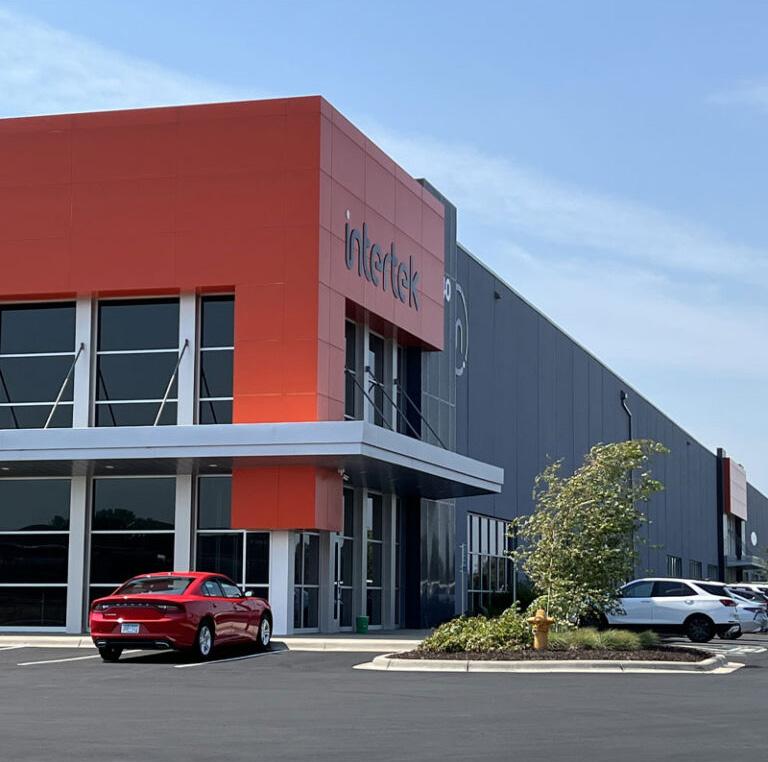
Seppamaki: When I started at Mortenson 20 years ago, there were very few females in the project management role and that has changed significantly in my career at Mortenson. I think companies like Mortenson that are open to bringing in female talent and making an effort to continue to recruit females in the industry whether it be architects, engineers or construction management is a major factor in the increase in talent we have seen in the industry. I also think there is more outreach in schools, with more females considering engineering as a career option, which has helped to bring in the female talent.
What do you find most fulfilling about working in the construction industr y?
Seppamaki: What I find the most fulfilling about working in the construction industry is that each project is different for a variety of reasons and always has multiple challenges. There has continued to be growth and development of skills throughout my career, from being an integral part of the construction team, to being the lead project manager on a project and now being a leader for our preconstruction group and leading a team in developing its skills.
What advice do you have for other women interested in pursuing a career in construction?
Seppamaki: My advice for other women pursuing a career in construction is to try to get exposure to the industry through mentorship, internships or taking a class in school. Once you have chosen a career in construction, learn as much as you can from the leaders around you. Throughout your career, find the right times to take on challenging opportunities or new roles as you will learn and grow the most in those opportunities.
Murphy from page 12
to get together to solve them. I don’t always offer the solution, but I always make sure it is resolved and will not affect the project timeline.
What advice do you have for other women interested in pursuing a career in construction?
Murphy: If you are in this industry, you are a strong woman, so be sure to build and lift up strong women while mentoring. Make your own project management style by taking the best qualities from the people you learn from and finding your own rhythm that works for you. Also, take responsibility for your actions (don’t ever throw your team under the bus), and don’t take credit for things you didn’t do. Always give credit where credit is due.

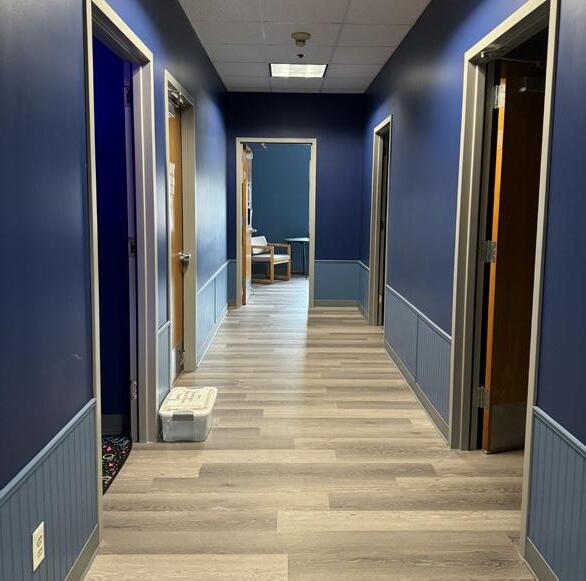

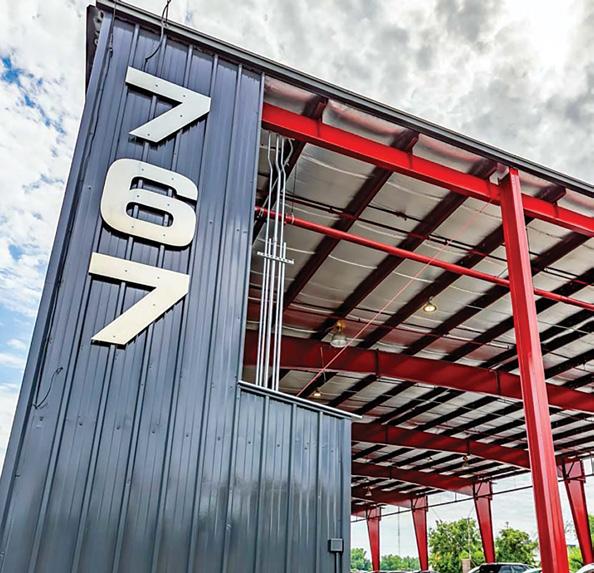
MINNESOTA REAL ESTATE JOURNAL April 2024 27
v Commercial | Industrial | Retail | Specialty Contact Us: 651-425-4475 | Freshpaintinc.com ...because Your Image Matters! Seppamaki from page 10
Industrial from page 1
“From a sales perspective, there is not much on the market in Minneapolis today,” Mahoney said. “But I can say that there has been good reception for the few projects that are on the market. The biggest shock that came with the higher interest rates has subsided. There is more confidence among investors in the lending environment today than what we saw in 2023.”
That doesn’t that it is easy for either investors to make industrial deals or developers to build new industrial facilities. Interest rates might not be rising, but they’re not falling, either.
Mahoney, though, said that he is optimistic about the trend in which demand for industrial space and new construction is heading.
“Six months ago, we might have had two or three investors that were bidding competitively on industrial properties,” Mahoney said. “That is closer to eight or 10 groups now. There is more capital and buyers out there for the product today.”
More industrial development on the way?
What about industrial development activity? Will that pick up in 2024?
Probably not. As Mahoney said, the pace of speculative industrial construction has slowed dramatically both across the country and in the Twin Cities market. Mahoney predicted that no new spec industrial developments will get off the ground this year in the Minneapolis-St. Paul market.
“For a true spec project? There’ll be between zero and two of those this year in our market,” Mahoney
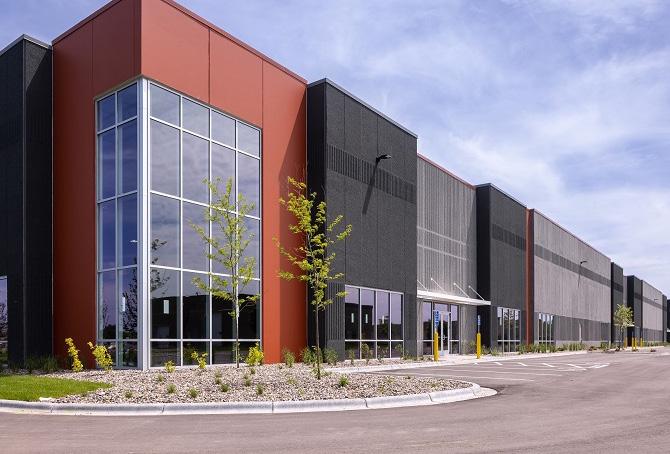
said. “We will have to wait and see if that prediction comes to fruition.”
What is still solid is the demand from tenants looking for industrial space. Mahoney said that when he speaks to brokerage company officials, they tell him that there is anywhere from 10 million to 13 million square feet of active users hunting down industrial space now in the Twin Cities market.
That is just slightly less than what the market saw two years ago, Mahoney said.
What has changed is the size of industrial properties that users are seeking. Mahoney said that users looking for 300,000 square feet of space or more are not as active today. More users are instead searching for industrial property in the 30,000-square-foot range, he said.
The Twin Cities market absorbed about 1.7 million square feet of industrial space in the first quarter of 2024, Mahoney said. That’s a step back from the fig-






CONGRATULATIONS





MINNESOTA REAL ESTATE JOURNAL April 2024 28
David
REAL ESTATE LAWYER OF THE YEAR FINALIST 2024 Minnesota Real Estate Journal Awards
Hellmuth
Opus’ Johnny Cake Business Center, Apple Valley, Minnesota. (Photo courtesy of Opus.)

ures this market saw in 2021 and 2022 but is slightly more activity than in the pre-pandemic years.
Staying busy
Despite the slowdown in the local industrial market, Opus is remaining busy in this sector, Mahoney said.
Opus is leasing up one industrial project in Apple Valley and a second in Shakopee. Both are spec projects. Opus also plans to start construction on a new industrial facility in Maple Grove next year of 246,000 square feet. Opus can’t yet name the client filling this space.
Mahoney said that industrial projects today need a solid amount of space leased before construction begins.
“The lending environment is challenging today,” he said. “There is uncertainty in the capital markets. So having at least a portion of a project pre-leased is important. It’s harder to get financing on a project that is 100% spec. The build-to-suits or the partially pre-leased spec projects will continue to earn financing, though, if they are good projects.”
The slowdown in new industrial projects means that it can be difficult today for end users to find space. Users looking for space of 100,000 to 150,000 square feet in areas closer to Minneapolis and St. Paul will have an especially difficult time, Mahoney said.
Users seeking larger chunks of industrial space must look toward farther-out locations such as Dayton or Shakopee, Mahoney said.
“There is not a lot of availability out there,” he said.
Users seeking newer industrial space are looking for certain amenities today. They want higher ceiling heights, with 28-foot heights increasingly becoming the bare minimum for many end users. Users also want outdoor storage and ample trailer parking.
Power availability is important, too, especially considering how long it can take for switchgears or transformers to arrive for tenants interested in upgrading their power.
Other companies are looking for lifestyle amenities such as walking trails, green outdoor spaces or nearby retail options. Large windows that let in plenty of natural light are important features, too, Mahoney said.

MINNESOTA REAL ESTATE JOURNAL April 2024 29
Opus’ River Valley Business Park, Shakopee, Minnesota. (Photo courtesy of Opus.)
Brown: Last year when Minnesota Real Estate Journal had its healthcare summit, we discussed this on a panel. Panelists talked about seven or eight deals in which medical providers moved into general office buildings. Is that a trend? I think it is. There is a shortage of medical office space. That causes users to say that they can build new or try to find an alternative that will meet their fundamental needs and costs less.
It’s not easy to make this work, though. You have to check a certain number of boxes to make sure that the property is a good fit. We’ve had some deals where we have put medical clients into general office buildings. In these cases, the owner was someone who understood healthcare and what was required. The client had to make sure that the buildings had adequate plumbing capacity and HVAC, that they could support the weight of certain medical equipment. It required an investment. But that investment compared to new construction was still more attractive.
Is this a trend? I think the question is more how deep will the trend run? As you watch some of these office assets struggle, you are going to see medical uses moving into them.
Do you expect health systems to continue to focus on ambulatory surgery centers, freestanding clinics and other outpatient facilities?
Brown: There has been a push for more ambulatory care. It’s about getting medical services closer to the patient. Imaging work would always be done at the hospital. Surgery was always done at the hospital. Over time as technology has changed and the reimbursements that medical providers receive
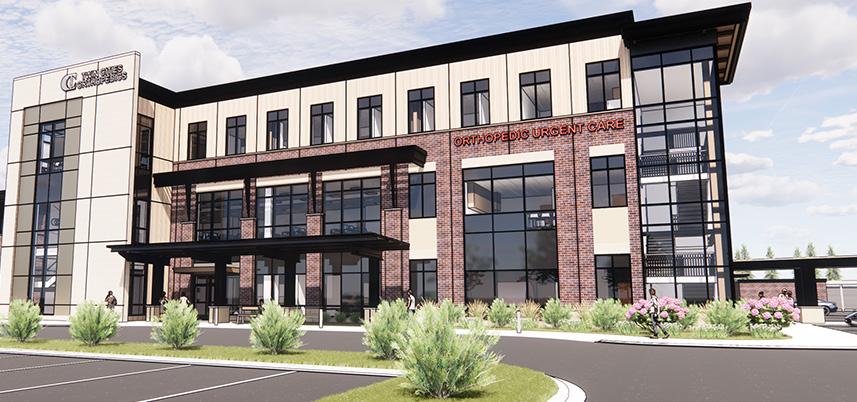
have gone down, providers have turned more toward the ambulatory category.
What is the purpose of the hospital then? Providers have redefined those services that are being provided in a hospital setting. Why does a certain type of service have to be provided at the hospital? Can it be provided in an outpatient facility? As much as possible, healthcare systems are trying to push care to the lowest-cost scenario.
Earlier in my career, if you had a hip replacement, you were told that you needed to stay off your hip for six weeks. That was the rule of thumb. Today, you are putting weight on it and walking 45 minutes after surgery. These changes have had significant effects on how fast you get out of the hospital when you actually have a procedure at a central hospital. It will be interesting going forward. As healthcare has gone more ambulatory, it’s almost taken on a
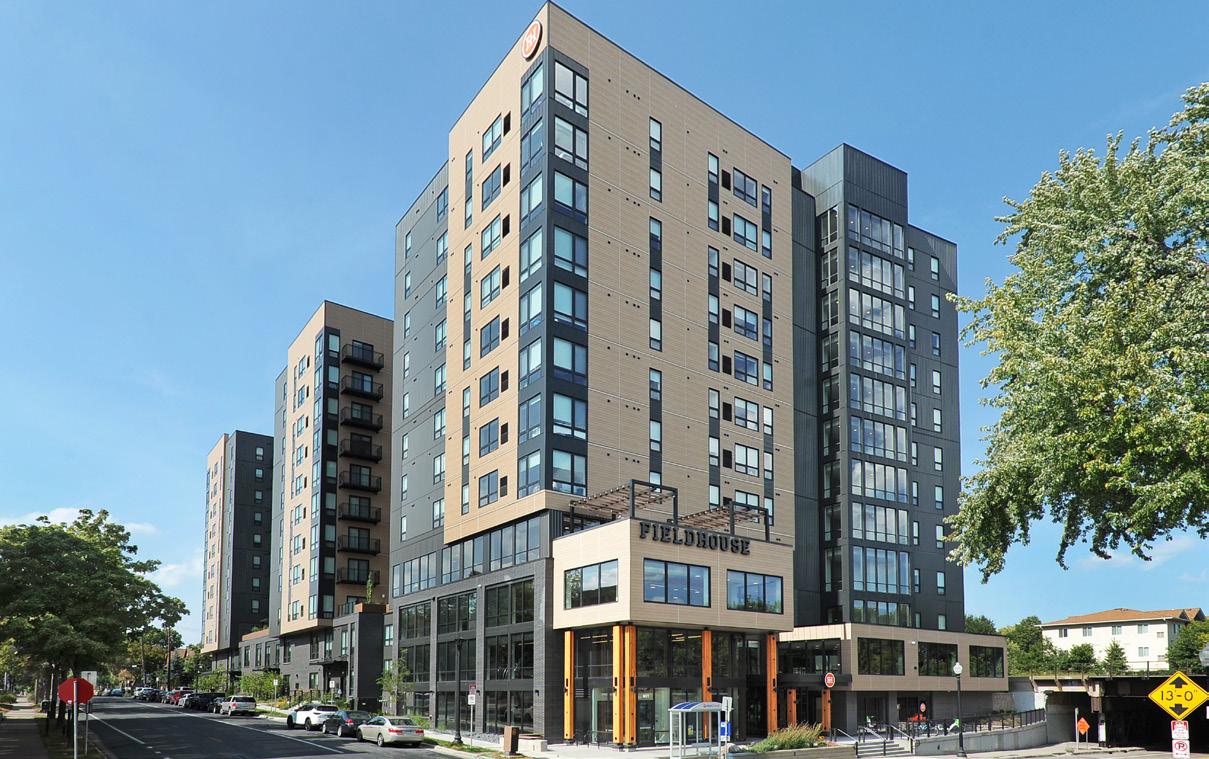

retail type of flair. It’s now about accessibility and signage. Healthcare users want more of the attributes of what makes for a good retail location. Will healthcare providers be more willing to accept a location that doesn’t have the best visibility but comes at a lower cost or will they increasingly say that they need high visibility and an accessible location, even if that costs more? I’d never say that there is a right or wrong answer to that. But there is going to be a dialogue that hasn’t occurred in the past.
What about tenant demand? Are healthcare users actively seeking new space in the Twin Cities market?
Brown: If you are on the private practice side, you either need to grow for scale or you are going to be consumed by a system that wants to grow. Are more systems going to grow and hire new physicians to compete with larger private practices?



MINNESOTA REAL ESTATE JOURNAL April 2024 30
Forte from page 4
A rendering of the Twin Cities Orthopedics ASC that is planned and underway in the Prudential campus redevelopment in Plymouth, Minnesota. (Photo courtesy of Forte Real Estate Partners.)
On other days, the park space will be programmed with music nights, farmers markets, craft fairs or other events.
“Whatever the neighborhood wants, that’s what that space can provide them,” Nordness said. “It will evolve and respond to what the neighbors and fans want to see and use. We will be pivoting and growing. But the idea was to start with this great space that invites everyone to come over 365 days a year.”
Bob Pfefferle, managing director at Hines, agreed that the park serves as the centerpiece of the North Loop Green development.
“North Loop Green will be an exciting and dynamic destination for businesses and residents,” Pfefferle said in a statement. “North Loop Green will add significant dining, recreational and family-friendly entertainment options in the rapidly growing North Loop submarket.”
The demand for sports-entertainment districts
Nordness said that sports-entertainment districts that offer a combination of entertainment, retail and dining options have become more important in an era in which consumers have so many choices as to how they spend their dollars.
on their many screens at home. They can go to local bars and restaurants to watch sporting events or concerts on big-screen TVs.
for sports teams to offer something extra to entice
District to page 35








MINNESOTA REAL ESTATE JOURNAL April 2024 31
OUR TEAM. YOUR SUCCESS. At J-Berd we deliver unparalleled creative and affordable solutions. We provide expertise in plumbing, heating, and cooling systems as well as electrical and fire protection systems. Wherever we work our clients benefit from a streamlined, safe and simplified process led by well-informed professionals. Set your project up for success with J-Berd Companies. sfsprinkler.com j-berd.com berdelectric.com
Congratulations to
recognized
achievements! District
(320) 656-0847
all the finalists and J-Berd partners that are being
for your
from page 6
Indeed, numerous observers have drawn attention to the imminent impact on Minneapolis’s tax revenue, a topic extensively discussed both formally and informally. At the Real Estate Journal’s October 2023 Downtown Summit in Minneapolis, local professionals and policymakers engaged in deliberations concerning the future trajectory of the downtown area, particularly addressing concerns regarding the potential inability to salvage declining office building values. Furthermore, the issue of declining property values was highlighted in the City of Minneapolis’s assessment budget presentation for 2024. The city administration openly acknowledged the uptick in tax appeals, signaling a possible substantial reduction in taxable property values. Presently, over $10.5 billion worth of property is under petition in Minneapolis, with nearly $6.5 billion from 2023 alone. This represents nearly half of the city’s commercial tax base, indicating that the final assessed values may significantly differ from their current estimates.
However, to date, we have not seen any quantifiable estimation of the overall financial impact these reduced office building values are expected to have on the City of Minneapolis’s tax revenue. In this paper, we estimate the potential loss of tax revenue Minneapolis will face due to increased office vacancies from a subset of the largest office buildings downtown.
Key conclusions
Our analysis indicates that the City of Minneapolis is projected to incur a decline in tax revenue of nearly $10.5 million due to declining values of
“Class A” office buildings in the Minneapolis Central Business District. This $10.5 million reduction in tax revenue is a direct result of a decline in property value of approximately $1.65 billion and equates to just under 1% of the city’s total budgeted revenue of $1.7 billion. It is important to note that the term “city” refers to only taxes collected for the City of Minneapolis directly and not the City of Minneapolis Park Board.
Given the volume of tax appeals outstanding for the year 2023, we are likely to see this impact on taxes collected in 2024 and in subsequent years. The reduction in assessed values means that the tax revenue that the city and other jurisdictions collect on these buildings will be lower than previous collections, the mil rate for the jurisdiction will increase, or some combination of the two. An increase in the mil rate adds more expenses to the building owner, making the investment less attractive, leading to fewer investors putting their money in the city of Minneapolis.
Approach
Our analysis relies on the valuation principle of substitution and the comparative approach to appraisal. More explicitly, we employed a method wherein we ascertained the fair market value by examining the recent sale of the LaSalle Plaza in downtown Minneapolis and compared these figures to their most recently assessed values. This enabled us to quantify the loss of value incurred by such properties. By then using that metric as a proxy for the percentage reduction in value of comparable downtown office properties, we estimated the total
loss in value and, by extension, the loss in tax revenue generated by those properties.
In 2023 (payable 2024), the Minneapolis assessor’s office valued LaSalle Plaza at $87 million. However, the property sold for $46 million in June of 2023, indicating a 48% reduction in value between the assessed value and the actual sale price. This 48% reduction in value is applied uniformly across comparable office buildings.
This analysis does not aim to quantify the entirety of the change in taxable values for office properties across the City of Minneapolis, nor does it encompass all office properties in the Minneapolis Central Business District (CBD). Instead, our focus is narrowed to a subset of office properties in the CBD where a comparison to LaSalle Plaza is feasible.
The geographical delineation of the area used (CBD) is defined by the Mississippi River to the north, Interstate 35W to the east, Interstate 94 to the south, and Interstate 394/2nd Avenue to the west. Within this area, we selected only Class A office properties which we defined as those designated by CoStar as 4- and 5-star office buildings. Application of these parameters resulted in a list of 39 properties included in our analysis, collectively compromising just under 25 million square feet of leasable space. This subset constitutes more than 70% of the overall office space within the Minneapolis CBD.
Data from recent trades on Minneapolis office properties are limited. Other than LaSalle, there were two recent sales in downtown Minneapolis, RBC Gateway and the NorthStar Center. RBC Gateway is excluded from this analysis as it is a new construction and therefore not typical of other


MINNESOTA REAL ESTATE JOURNAL April 2024 32
Tax from page 8
downtown officed properties. The NorthStar Center was purchased for $6.2 million in May 2023 for redevelopment into multifamily residential. The 2022 (payable 2023) assessed value of NorthStar Center was $47.1M. The $40.9M decline represents an 87% reduction in value.
While this reduction may suggest that market values have declined even more than our 48% estimate, we consider NorthStar Center to be an outlier. Given its age (1960s build), poor condition, and extreme vacancy, we don’t consider NorthStar Center a good property to use as a comparable for other class-A, downtown office properties.
While the application of a 48% reduction in value is based solely on the change in value of a single property transaction, this is a logical, if conservative, estimate to use for comparable properties. In the future we may have more transaction data to refine our analysis with Wells Fargo Center and Capella Tower both on the market, however for now, the LaSalle trade is the best data available. The LaSalle Plaza transaction was a fair market transaction of a typical office property in downtown Minneapolis and the highest and best use of the property remains as office (with ground and skyway level retail).
We only included buildings in the same central location (CBD), similar size, and similar class (A) in this analysis. LaSalle Plaza’s vacancy was approximately 30% compared to an average 24% vacancy rate for all other properties analyzed. While the overall lower vacancy rate of the subject properties suggests they may maintain their values better than LaSalle Plaza, we do not consider this difference in vacancy enough to materially impact our value estimates. Further, many of these properties have many leases expiring in the near term, suggesting
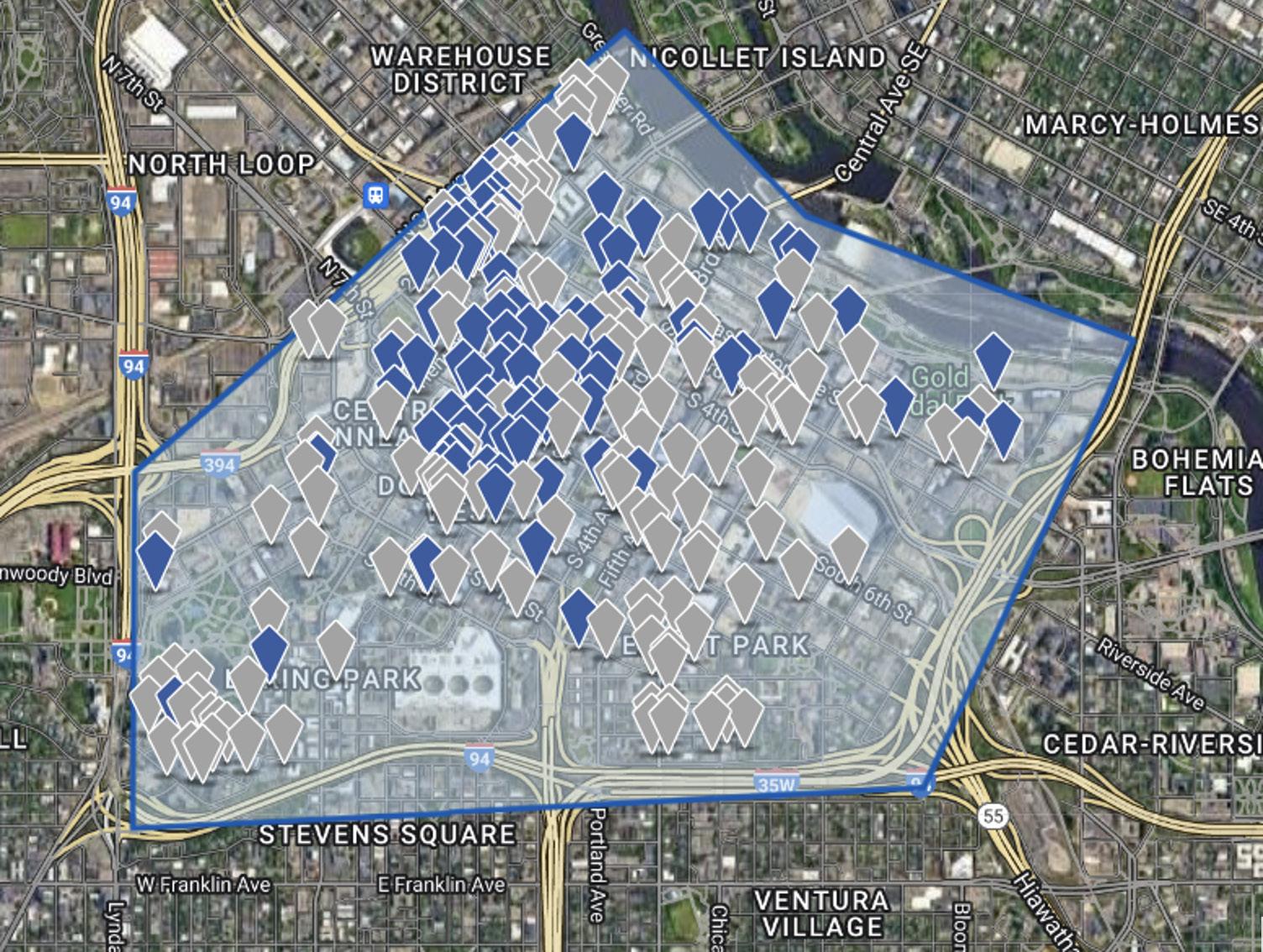
that vacancies will increase given most tenants are renewing into smaller footprints.
Analysis
Our analysis encompassed 39 Class A CBD properties ranging from 100,000 SF to 1.9 million SF. These properties had 2023 assessed values ranging from $9.5 million to $253 million. The buildings that meet the above criteria are shown as blue pins in Figure 1. The total 2023 assessed value (2024 payable) of these 39 buildings is approximately $3.5 billion. Applying a 48% reduction in value equals a
$1.65 billion loss and puts the new total value at approximately $1.85 billion. The current mill rate (tax rate) on these properties is 31 ($31 in annual tax for every $1,000 of assessed value). This is broken down into City at 6.30, Park Board at 1.36 County at 4.78, State at 6.00, School at 3.70, Metropolitan Council at 0.25, Special at 0.48, and Fiscal Disparity (which supports Twin Cities metro areawide communities) of 8.10.







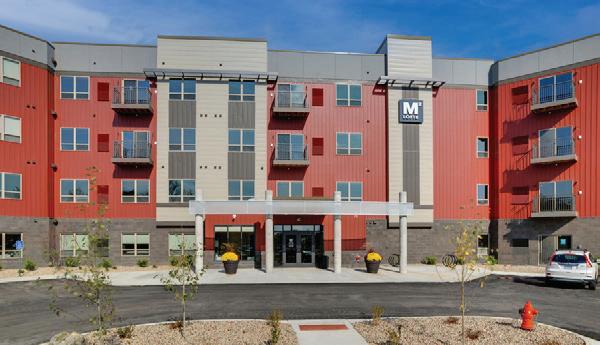

MINNESOTA REAL ESTATE JOURNAL April 2024 33
Steve Michel 612.850.4539 smichel@michelcommercialre.com Peter Michel 612.790.8246 pmichel@michelcommercialre.com Phil Reesnes 612.759.5000 preesnes@michelcommercialre.com Heidi Addo 612.805.5023 haddo@michelcommercialre.com Jesse Thurston 651.380.9058 jthurston@michelcommercialre.com Includes comprehensive market and financial analysis as well as recent like-kind rent and sale comparables. 150 APARTMENT HOMES SALES PROPOSAL The Lily Apartment Homes Pricing Guidance MICHEL COMMERCIAL REAL ESTATE THE LILY APARTMENT HOMES 2 Bedroom/Rent Comparison The Lily Town Hall $1,659 $1,548 River View AVG. BEDROOM $2,408 $2,400 $1,995 $2,206 3 BEDROOM $1,813 The Lily The Dylan Town Hall 2 BEDROOM 3 Valuation Example with Pricing Guidance and Bedroom/Rent Comparison The Nexus at Gray’s Landing $29MM | 142 Units M2 Lofts $20.5MM | 89 Units JUST SOLD! michelcommercialre.com COMPLIMENTARY VALUATION of your Multifamily Property Tax to page 34
Figure 1. Blue pins are buildings in analysis. grey pins are office buildings that do not meet our criteria.
This implies that for the properties included in this analysis, the estimated tax revenue payable in 2024, based on the 2023 assessed values will be nearly $22 million for the city of Minneapolis alone. However, if we apply our 48% reduction to the current assessed values of these buildings, the city will receive $11.3 million in tax revenue, representing a nearly $10.5 million reduction in city revenue for 2024.
In addition to the City of Minneapolis, other taxing jurisdictions will face similar tax revenue declines. The state has the potential to lose $10 million in tax revenue from these 39 Class A office properties. Hennepin County is set to lose approximately $8 million; the Minneapolis School District may face a loss of over $6 million in tax revenue. Other jurisdictions including the Metropolitan Council and communities that benefit from Fiscal Disparities could collectively face $15 million in lost tax revenue. Across all jurisdictions, we estimate a revenue loss of over $51 million per year.
Potential limitations
Applying a single value reduction percentage to all 39 properties reviewed is perhaps an overly simplistic approach to valuation and has some limitations. Assessors rely on many more data points and conduct more in-depth analyses on each individual property to determine an appropriate assessed value. Furthermore, property values do not all decline at the same rate. Certain properties, those better positioned to weather the downturn due to condition, management, location, amenities, etc., may not see occupancy, and therefore value, drop
as severely as it did at LaSalle Plaza. Conversely, many properties will struggle even more than LaSalle Plaza to maintain occupancy and rents and could therefore exceed a 48% value reduction. Despite the various nuances that exist for individual properties, we are comfortable using a 48% value reduction based on LaSalle Plaza given that, in aggregate, it represents an appropriate indication of the market. It is the best, if not only, appropriate current comparable for assessors and appraisers to use.
Implications
It is insufficient to dismiss the loss in property values that is occurring as merely misfortune affecting building owners and investors; the repercussions extend far beyond that limited scope. The revenue generated through property taxes from these buildings is instrumental in supporting the city and progressing it forward. The funding received from its largest office buildings is influential in enabling the city to undertake vital projects and administer programs for the benefit of its citizens.
With a total budget of $1.72 billion (2024), a $10.5 million reduction in tax revenue represents a 0.62 percent decrease in revenue for the City of Minneapolis. This percentage reduction is perhaps less than many may have expected given the discussions and reporting around the calamitous situation with downtown office space. Still, a 0.62 percent drop in revenue on top of the loss of American Rescue Act funds and increasing expenses due to high inflation, presents a challenge that city leaders will need to address.
It is also important to remember that this $10.5 million reduction in tax revenue comes from only the

39 properties included in our analysis. Extending this analysis to all other office properties in Minneapolis (Class B and C offices and all those outside the CBD), many of which arguably will face even more extreme valuation reductions, would result in an even greater projected loss in tax revenue for the city. The monetary impact can be widespread, as diminished resources limit the city’s capacity to provide basic services, implement social programs, and support infrastructure projects.
When the city grapples with financial constraints, such as the one presented in our findings, it adversely affects the collective well-being of its citizens and visitors. With such a decrease in revenues due to the loss in property taxes, the deficit will presumably be passed along to the consumers and citizens within the city. How leadership should manage this loss in revenue falls outside the scope of this analysis, though it can reasonably be expected that the budget shortfall would need to be resolved through additional budget cuts and/or increased taxes on other property owners.
The objective of this research and analysis is not to sensationalize nor to present an alarmist scenario. Instead, it is an earnest effort to provide a measured assessment of the potential impact resulting from the decrease in office tower values in Minneapolis. Through the dissemination of this information, our objective is to foster collaboration between city officials and other key stakeholders facilitating awareness and action. These initiatives are pivotal in addressing the adverse effects stemming from the challenges confronting office buildings.

MINNESOTA REAL ESTATE JOURNAL April 2024 34
Moss & Barnett Congratulates Tim Gustin 612-877-5409 | Tim.Gustin@lawmoss.com Minneapolis | St. Cloud | www.LawMoss.com Tim serves as Chair of Moss & Barnett’s Real Estate and Real Estate Finance teams, as well as Chair of Moss & Barnett’s Board of Directors. Tim’s inspired, visionary, and compassionate leadership has been essential to the ongoing success of Moss & Barnett, and we are honored to know Tim as our colleague and friend. Congratulations to Tim and to all of this year’s finalists! Finalist, 2024 Minnesota Real Estate Journal Real Estate Awards “Real Estate Lawyer of the Year - Male” Tax from page 33
fans to visit their stadiums. They are a way for urban neighborhoods to pry consumers away from their smartphones and other devices.
“These sports teams are incredibly valuable,” Nordness said. “But consumers have an array of offerings outside their front doors. The idea of creating a better fan experience is always top of mind with owners. The ability to offer a great experience and new and unique ways to experience fandom is something that owners are often searching for. And that often leads to creating something outside the venue.”
And while it’s true that fans can watch their favorite teams from anywhere thanks to smartphones, it’s equally true that these same fans are always looking for new experiences to share in person with their friends.
“People want to come together in an environment that is interesting and compelling,” Nordness said.
Nordness refers to the area around Target Field as a dream spot for a project like North Loop Green. The North Loop is already a successful mixed-use district with shops, restaurants and two sporing venues within a short walk from each other.
Then there’s the architecture in the area, which Nordness said boasts its own unique style.
“We were so excited to come in and work with Hines on this project,” Nordness said. “It’s not too often that you can get a chance like this to make such a difference in a neighborhood.”



MINNESOTA REAL ESTATE JOURNAL April 2024 35
ON TIME AND ON BUDGET IS JUST THE BASELINE... WHEN IT MATTERS, CHOOSE A STRATEGIC PARTNER CONGRATULATIONS MINNESOTA REAL ESTATE JOURNAL WINNERS AND FINALISTS DEVELOPMENT | CONSULTING | CONSTRUCTION MANAGEMENT LEARN MORE AT WWW.ONYXSP.COM District from page 31
personal income declined in February after a flat reading in January. With spending up and income down, personal savings declined to the lowest level since December 2022.
Economic indicators and GDP
The leading economic indicators (LEI) ticked higher in February following 23 consecutive months of decline. Further improvement in the LEI is needed to confirm that the economy is poised to re-accelerate, but at least this suggests that most of the factors that have been cited as holding back economic growth are stabilizing. The biggest positive contributor to the LEI was the improvement in the length of the average workweek, while the biggest negative contributor was interest rates.
Improvement was also seen in the manufacturing sector via the ISM survey for March. That index moved above the neutral level of 50 for the first time since September 2022. The Production, New Orders, and Employment components provided much of the strength for the overall survey. Expectations for stronger demand and low customer inventory levels suggest support for future production.
The final reading on real GDP in fourth quarter 2023 was revised up to 3.4% from 3.2%. Stronger consumer spending and business investment were drivers of the upward revision. Nominal corporate profits in fourth quarter 2023 were up 4.1% during the quarter and up 5.1% year-over-year.
The labor market
The March employment report provided further evidence of the strength of the labor market. Non-
farm payrolls in the establishment survey rose 303,000 – the largest gain since May 2023 – and the household survey showed an increase of 498,000 jobs. The unemployment rate dropped back to 3.8% from 3.9%, the growth rate of average hourly earnings declined from 4.3% to 4.1% which was the weakest growth since June 2021, and the average weekly hours worked ticked higher.
In a separate report, the National Federation of Independent Business (NFIB) said that the net percent of firms planning to raise worker compensation decreased from 26% to 19%, not only fully reversing the jump in compensation plans that occurred in late 2023 but also hitting its lowest level since March 2021.
It is interesting to note that over the last 12 months, 1,347,000 full-time jobs have been lost while 1,888,000 part-time jobs have been added. Consequently, on a net basis, the yearly gain in jobs has come from part-time employment. Multiple job holders have increased by 492,000.
Interest rate expectations
As expected, at their mid-March meeting the Federal Open Market Committee (FOMC) kept the target range for the Fed Funds rate at 5.25% to 5.50%. Their official statement following the meeting said that they don’t “expect it will be appropriate to reduce the target range until it has gained greater confidence that inflation is moving sustainably toward 2.0%.”
Of particular interest was the economic projections that the FOMC updates on a quarterly basis.
The median projection for real GDP growth (from fourth quarter 2023 to fourth quarter 2024) was revised up to 2.1% from 1.4%. The median projection for core PCE inflation in fourth quarter 2024 was revised up to 2.6% from 2.4%.
On the topic of interest rate cuts, the median forecast of the 19 members was for three interest rate cuts this year. Interestingly, 10 members forecast three or more cuts, while nine members forecast two or fewer cuts. In other words, although the median projection came out as three cuts, it was a close call that could have been changed by the forecast of a single committee member.
Undoubtedly, the Fed is leaning towards cutting rates this year at some point. However, the stickiness of inflation in some categories along with the strength of the labor market is causing them to be patient. The recent rebound in some economic metrics has reduced the urgency of a near-term interest rate cut. Further evidence that inflation is moving sustainably toward their target of 2.0%, along with the continued rebalancing of supply and demand in the labor market, will be necessary for the FOMC members to have the confidence to make the initial cut in rates. Markets have moved expectations for the timing of the first interest rate cut to July.
John Beuerlein is Chief Economist at the Pohlad Companies.
MINNESOTA REAL ESTATE JOURNAL April 2024 36
goPLG.com As one of the largest direct C-PACE lenders and the most active in Minnesota, we’re your pros to blend down the cost of capital, reduce operating expenses, and create more sustainable real estate. to all the top pros for showing just how it’s done. Bravo Workers from page 18
if it can generate more successful solutions and project results.
Tech and our EI (Environmental Impact)
The built environment is responsible for 40% of carbon emissions, and that same built environment is on track to overtake 18 million acres of farmland by 2040, according to American Farmland Trust. With the multifamily industry accounting for 34% of all new residential construction in 2022, we have a responsibility to address our impact on the environment, leading by example with the approaches and systems we implement. Again, technology is the key.
One of the most notable eco trends is the switch away from coal and oil to electric. The city of Chicago recently joined nearly 100 other cities and counties in the U.S. (mostly on the East and West coasts) restricting gas appliances and heating in new construction. These decarbonization efforts are here to stay and will likely only increase.
In Illinois, all new construction homes and multifamily buildings will also be required to provide EV-capable parking spaces (starting at 40% of the parking for large multifamily projects, with that percentage increasing over the next 10 years to 70%) – the first state in the nation with such a law on the books.
My firm frequently counsels clients to not simply abide by minimum requirements but to future-proof their developments by taking efforts to the next level whenever possible, whether it’s a reduced parking/ alternative transit program, or use of advanced and efficient systems for building electrical and mechanical systems. Including this technology during the

initial build is far cheaper than playing “catch up” down the road.
Technology is also the future for a practice that’s been integral to human survival since the dawn of civilization: farming. And the multifamily industry is an ideal partner – and can even showcase this as a future-forward sustainable amenity!
New ways of growing our food, such as hydroponics and aquaponics, have led to a rise in vertical farming (pun intended!). While green roofs and urban rooftop farms have become more mainstream, the possibility of incorporating farmland into the vertical spaces on multifamily buildings are still mainly untapped in our country – though increasingly popular in Europe. There is an incredible opportunity for developers to be on the forefront of this in the U.S.,
LOFTY EXPECTATIONS
and as an architect, I’m incredibly excited by the prospect.
To once again quote from Peter Diamandis’s keynote speech, “The day before something is a breakthrough, it’s a crazy idea.”
We are living in truly groundbreaking times. The multifamily sector has long been a leader in innovation for the real estate industry, being the first to take those once “crazy ideas” and literally build them. I eagerly anticipate what lies ahead for multifamily.
Brad Lutz is managing principal in the Chicago office of architecture firm Baker Barrios and practice leader of the multifamily/residential practice.

MINNESOTA REAL ESTATE JOURNAL April 2024 37
PCL.COM
Minnesota Zoo
Trail Technology from page 20
Treetop
Image by Barbara A Lane from Pixabay

MINNESOTA REAL ESTATE JOURNAL April 2024 38
LIFETIME ACHIEVEMENT

MINNESOTA REAL ESTATE JOURNAL April 2024 39
many people and a lot of effort to build strong communities. He believes that only happens when people care and are willing to step up and lead by example. The Rauenhorst family, with its philanthropic commitment, understands the link between business and community. Being brought up in the Rauenhorst family has instilled in Mark a deep commitment to giving back and building communities.
Foundation. In addition, he was previously a director for public companies Graco Inc. and Conagra Brands, Inc. Mark is also a past member of The Real Estate Roundtable, Minnesota Business Partnership and NAIOP, the Commercial Real Estate Development Association.
Mark and his wife Karen have been married 49 years, have four children and eight grandchildren.

Mark currently serves on the board of directors of Ascension Catholic Academy; Catholic Relief Services Foundation; The Papal Foundation; Creighton University; GHR Foundation; and the University of Notre Dame – Advisory Council for Mendoza College of Business. Mark also is a member of the Urban Land Institute and Young Presidents’ Organization (YPO).
Mark has previously served as a board member for Opus Holding, L.L.C., the Opus Foundation, CommonBond Communities, Catholic Relief Services and Ascension School. Mark was also a founding board member of the Aim Higher

In 2020, Mark and his wife Karen were presented the Notre Dame award for Outstanding Contributions to Catholic education. Also in 2020, he and Karen received the J. Donald Moran, Distinguished Catholic Philanthropy Medal from the Leadership Roundtable.
Mark received a bachelor’s degree in sociology and psychology from Creighton University and a master’s degree in business administration from the University of Notre Dame.
PREVIOUS LIFETIME ACHIEVEMENT AWARDS

2023 JOE RYAN
Joe Ryan’s personal philosophy of always “delivering value” was instrumental in the creation of Oppidan Investment Company in 1991. Oppidan is the Latin word for investing in your city, and that’s exactly what Joe strives to achieve each and every day. Oppidan is the result of years of hard work, recalibration and creativity, all of which makes it unique and dynamic. There is no other company quite like Oppidan and for the past 32 years, “delivering value” has been the key to transforming Oppidan into a national real estate development leader. Joe built a team steeped with experience in development, capital markets, project management, construction management and senior housing operations. Oppidan quickly became the leader you can trust, with the reputation to prove it. Relationships matter to Joe, which is why every Oppidan client has become a repeat client.



#mrejawards | #rejournals | Find Us On re_jounrals REjournals
P R E M I E R B A N K S Premier Bank NMLS ID# 403178 Premier Bank Minnesota NMLS ID# 403214 Our heartfelt congratulations to the Minnesota REJournal award finalists and winners! 20 Offices Statewide | premierbanks.com
PROJECT AWARDS
Affordable Housing - Suburban
Rise on 7
The Col Apartments
WINNER! THE FERN
Chorus Apartments
Goldenrod Glen
Affordable Housing - Urban
Minneapolis Public Housing Authority - Varius Urban Sites
WINNER! PEREGRINE
The Flats at Malcolm Yards
Education & Daycare
Maple River K-12 School
New Creations St Michael
WINNER! JUXTAPOSITION ARTS
Next Steps Learning Center
Flex Building Project
WINNER! TWIN CITY TWISTERS
The Waters Business Park Rise on 7
CenterPoint Energy North District Service Center
Government / Community Facility
Columbia Heights City Hall
Bloomington Fire Station #4
WINNER! LAKE ELMO CITY CENTER
North Metro Range Regional Public Safety Training Facility
Greater Minnesota
Bremer Bank St. Cloud
Prosper West Clubhouse Renovation and Addition
WINNER! CONFLUENCE HOTEL
Arrowpointe Medical Center Bryk on Broadway
Legacy Row Homes Truck Center Companies I Mankato
Hotel / Hospitality
Courtyard by Marriott
Hyatt House Mall of America MSP Airport
WINNER! CONFLUENCE HOTEL
Industrial - East
InverPointe Business Park #5
RJ Schinner at Southeast Industrial Park
Boulder Lakes Business Center
Hemingway Industrial
FedEx Ground Distribution & District Office BTS
WINNER! EASTRIDGE BUSINESS CENTER
Innovia Medical lease at Waters II in Eagan.
Industrial - West
WINNER! GRACO DISTRIBUTION CENTER
nVent Hoffman Enclosures Inc. - French
Lake Distribution Center, Dayton 169 Logistics Center - Brooklyn Park
Arbor Lakes Building 5 - 8
River Valley Business Park
Crosstown Core Industrial Center

MINNESOTA REAL ESTATE JOURNAL April 2024 41
CONGRATULATIONS TO MINNESOTA REAL ESTATE AWARD S 2024 WINNERS & FINALISTS! Roers Companies is a multifamily real estate investment firm powered by in-house development, construction, and property management. We are the 2023 Minnesota Real Estate Awards Developer of the Year, partnering with individual investors to build institutional-quality apartments in high-demand neighborhoods across the nation. Learn more at roerscompanies.com
Interior Design - Healthcare
Hamm Clinic
WINNER! CHILDREN’S MINNESOTA
LIMITED STAY UNIT
OVO LASIK + Lens
Skin Rejuvenation Clinic
Interior Design - Hotel
Courtyard by Marriott
WINNER! CONFLUENCE HOTEL
Interior Design - Multifamily East
Canvas at Inver Grove Heights
WINNER! THE AURILLA APARTMENTS
Interior Design - Multifamily North
The Fern
Aster Apartments
WINNER! THE COL APARTMENTS
Prosper West Clubhouse Renovation and Addition
Interior Design - Multifamily West
WINNER! ALCOTT
Chorus Apartments
The Dylan
Volo at Texa Tonka
The Townline
Risor of Maple Grove
Interior Design - Urban Multifamily
1000 Main
Juliette Apartments
WINNER! KENTON HOUSE
Waterbury House
The Abbott Residences
Akin
Tyler Street Stacks
The Station at Malcolm Yards
Interior Design - Suburban Office
CFMOTO USA Headquarters
Mitsubishi HC Capital America
WINNER! MSP COMMERCIAL OFFICE
Shine Wealth
Tricam Industries
Channel Partners
Interior Design - Urban Office
Box Financial
Maslon LLP Workplace
VIBE Realty Office
Fredrikson & Byron Law Office Relocation
WINNER! SHERMAN ASSOCIATES
Interior Design - Retail
WINNER! PINTS & PADDLE
Lunds & Byerlys Apple Valley
Medical Property - East
Eagan Specialty Center
WINNER! HIGHLAND BRIDGE MEDICAL OFFICE
Lakeville Specialty Center
Medical Property - North
Arrowpointe Medical Center
Associated Eyecare Lino Lakes
WINNER! PRAIRIECARE BROOKLYN PARK
INPATIENT HOSPITAL EXPANSION

MINNESOTA REAL ESTATE JOURNAL April 2024 42
Medical Property - West
WINNER! TWIN CITIES ORTHOPEDICS WITH URGENT CARE PLYMOUTH
Bhatti GI Surgery Center
Two Twelve Medical Center Vertical Expansion
Mixed-Use - Suburban
WINNER! CARBON 31
Blaylock Plumbing Co.
Sand Creek Flats
Mixed-Use - Urban
The Station at Malcolm Yards
Tyler Street Stacks
The Abbott Residences
Hencen
WINNER! WATERBURY HOUSE
Office
WINNER! SHERMAN ASSOCIATES
Northside Achievement Zone
Castlelake
Mitsubishi HC Capital America

Tricam Industries
Bremer Bank Capella Tower
Redevelopment - Public Benefit
Compass Academy
Minnesota Zoo Treetop Trail
WINNER! AMERICAN SWEDISH INSTITUTE
TURNBLAD MANSION CARRIAGE HOUSE RESTORATION
Redemption Church
Redevelopment - Healthcare
Park Dental Oak Park Heights
WINNER! ARROWPOINTE MEDICAL CENTER
Two Twelve Medical Center Vertical Expansion
Redevelopment - Entertainment Venue
Historic Hollywood Theater Rehabilitation & Reuse
WINNER! EQUESTRIA WEST AT BAVARIA DOWNS

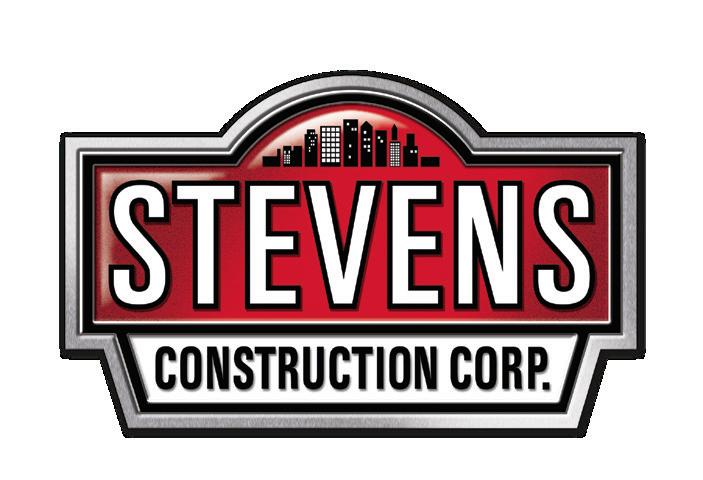
Redevelopment - Retail / Restaurant
Birch Run Station Exterior Improvements
Time Square Apple Valley
Getaway Motor Cafe + Riverside Getaway
WINNER! 539 BUILDING RENOVATION
Marvin Warroad Main Avenue Redevelopment
Maison Margaux
Redevelopment - Industrial
WINNER! GOLDEN VALLEY BUSINESS PARK
Redevelopment - Multifamily
The Exchange Apartments
The Stax of Long Lake 1010 Lofts
Mission Lofts (FKA Joyce Memorial Church)
WINNER! TWELVE22 APARTMENTS
Redevelopment - Office
WINNER! BREMER BANK ST. LOUIS PARK
MSP Commercial Headquarters

MINNESOTA REAL ESTATE JOURNAL April 2024 43
stevensconstruction.com | 952.853.5100 We Build Relationships. Trust. Quality. Congratulations to the 2024 Finalists!
Retail / Restaurant
PetSuites Pet Daycare
Kruse Markit Bistro, Coffee and Wine Bar
Wings Credit Union - Apple Valley
Pints & Paddle
WINNER! BADGER HILL BREWING & BRAVI’S CRAFT MEXICAN KITCHEN
My Burger Edina
Senior Housing - Metropolitan
WINNER! WIRTH ON THE WOODS
The Fern
Senior Housing - Suburban East
Cassia Harmony Gardens Senior Health & Living
New Perspective Senior Living Arden Hills
Talamore Senior Living Woodbury
WINNER! THE PILLARS OF LAKEVILLE
Senior Housing - Suburban West
Risor Bloomington
WINNER! AMIRA MINNETONKA
Forty-Forty Flats
OMRY Apartments at Canterbury
Risor of Maple Grove
Risor of St. Louis Park
Multifamily Rochester
WINNER! BRYK ON BROADWAY
Legacy Row Homes
Multifamily East
WINNER! CANVAS AT INVER GROVE HEIGHTS
Cottage Grove Apartments (The Aurilla)
Juliette Apartments
Driven by Integrity. Committed to Excellence.
Timberland Partners is a real estate investment, management, and development firm committed to providing exceptional service to our residents, growth opportunities for our team members, and building long-term relationships with our investment partners. Learn more at TimberlandPartners.com

Suburban Southwest Multifamily
Lake Place
OMRY - Active Adult Multi-Family
The Ellie
WINNER! PARAVEL
Waconia Apartments (The Otto)
Suburban Multifamily Northeast
WINNER! THE EXCHANGE APARTMENTS
The Ruby Apartments
Hill Farm
Suburban Multifamily Northwest
Aster Apartments
The Dylan
WINNER! THE PRESERVE AT ALBERTVILLE

MINNESOTA REAL ESTATE JOURNAL April 2024 44
Paravel | Eden Prairie, MN
Suburban Multifamily South
Minnetonka Station
Lynvue Apartments
The Townline
WINNER! THE FRED
Alcott
Suburban Multifamily West
WINNER! VOLO AT TEXA TONKA
The Stax of Long Lake
Urban Mulitfamily - Minneapolis Lakes
Corsa Apartments
Parkway Commons
West Lake Quarter
Risor of St. Louis Park
WINNER! Mission Lofts
Urban Mulitfamily - Minneapolis North
The Station at Malcolm Yards
1000 Main
Fieldhouse Dinkytown
WINNER! HENCEN
The Station at Malcolm Yards
The Laker
Urban Mulitfamily - Minneapolis South
Rosa at Kingfield
WINNER! Akin
Beck46

MINNESOTA REAL ESTATE JOURNAL April 2024 45
COMPANY AWARDS
Association Management Company of the Year
WINNER! FIRSTSERVICE RESIDENTIAL MINNESOTA
Associa Minnesota
Property Care
Sharper Management, LLC.
Gassen Company
Developer of the Year
Capital Partners
Roers Companies
Doran Companies
Endeavor Development
WINNER! OPPIDAN INVESTMENT COMPANY
General Contractor of the Year
RJM Construction LLC
Roers Companies
WINNER! DORAN COMPANIES
Connell’s Custom Exteriors, LLC
Owner / Landlord of the Year
WINNER! CAPITAL PARTNERS MANAGEMENT
Roers Companies
Butler Properties, LLC
Professional Service Company of the Year
Minnesota Builders Exchange
Monroe Moxness Berg PA
BluSky Restoration
WINNER! FORTE REAL ESTATE PARTNERS, LLC
Katey Bean & Company

Property Management Company of the Year - Commercial
WINNER! DAVIS
Capital Partners Management
Jones Lang LaSalle
Frauenshuh, Inc.
Suntide Commercial Realty, Inc.
Property Management Company of the Year - Multifamily
Village Green
WINNER! ROERS COMPANIES
HOA Living Minnesota
Whitecap Management

MINNESOTA REAL ESTATE JOURNAL April 2024 46
Congratulations to the 2024 Minnesota Real Estate Journal nominees! C R E A T I N G D E E P R O O T S F O R O V E R 1 0 0 Y E A R S
PEOPLE AWARDS
Architect / Engineer of the Year
WINNER! ERIN YOUNG, DORAN COMPANIES
Dean Dovolis, DJR
Thomas Wasmoen, Firm Ground Architects
Association Manager of the Year
Cheryl Kiekow, Cities Management
Colleen Brown, Associa Minnesota
Kimberly DuPont, Sharper Management, LLC
Adam Graf, Property Care
WINNER! KRISTI HOFFMAN, GASSEN COMPANY
Broker of the Year - Female
WINNER! ROBIN ZELLMER, COLLIERS
Heidi Addo, Michel Commercial Real Estate
Broker of the Year - Male
Avery Ticer, Cushman & Wakefield
Dan Lofgren, Forte Real Estate Partners
Marshall Nguyen, Wyn Group
Abe Roberts, Marcus & Millichap
WINNER! BRENT ERICKSON, NEWMARK
Economic Developer of the Year
Eric Van Oss, City of Rosemount
Brett Angell, City of Rogers
WINNER! DEANNA KUENNEN, CITY OF FARMINGTON
Emerging Leader of the Year - Female
Addie Kubitz, Modern Commercial Real Estate
WINNER! KATIE TREVENA, FORTE REAL ESTATE PARTNERS
Amy Schilling, Knutson Construction
Mackenzie Damerow, Hoyt Properties, Inc
Suzanne Schefcik, Avison Young
Isabella Ferrozzo, Evoke Partners
Emerging Leader of the Year - Male
Jordan Dick, Cushman & Wakefield
Jesse Tollison, Colliers
Mitch Robertson, Suntide Commercial Realty
Drew Gavic, ARCO/Murray
Andrew Glover, ARCO/Murray
Harrison Mohagen, Buhl Investors
WINNER! TREVOR MARTINEZ, SHERMAN ASSOCIATES
Ryan Windett, Frauenshuh, Inc.
Jake Kelly, Cushman and Wakefield
Aaron Rosell, Doro Real Estate & Keller Williams Realty Integrity Lakes
Executive of the Year
WINNER! RAFI GOLBERSTEIN, PACE LOAN GROUP
Shane LaFave, Roers Companies
Jeff Jiovanazzo, CBRE
Barb Schuba, Suntide Commercial Realty



MINNESOTA REAL ESTATE JOURNAL April 2024 47
MID-YEAR
summit June 12, 2024 Scan for more information and to register: Sponsorship Opportunities Available Jeff Johnson jeff.johnson@rejournals.com 612-819-0385 Jay Kodytek jaykodytek@rejournals.com 612-940-3713 12th Annual 4 Hours of CE will be Applied for Golden Valley Country Club 8:00am to 12:00pm 7:30am Breakfast and Networking
2024 Minnesota
APARTMENT
Project Manager of the Year
Wally Tufvander, Forte Real Estate Partners, LLC
Ken Kraft, Frauenshuh, Inc.
Tyler Schultz, PCL Construction Services, Inc.
WINNER! JENNIFER WILLIAMS, MSP COMMERCIAL
Property Manager of the YearFemale
Alicia Schaeffer, Davis
Stacey Kettenacker, Capital Partners Management
Michelle Shawhan, Cushman & Wakefield
Cheryl Kiekow, Cities Management
Rebekah Buck, Suntide Commercial Realty
Kristen Hedin, MSP Commercial
Nadette Waligora, Ebenezer Senior Living
Shelley Unruh, Frauenshuh, Inc.
Tami Shroyer, Frauenshuh, Inc.
Lydia Zinn, New Concepts Management Group
WINNER! ALEXX SMITH, TRANSWESTERN
Property Manager of the Year - Male
Brady Maly, Village Green
WINNER! JEFFREY BORST, RYAN COMPANIES US, INC.
Alex Neubauer, New Concept Management
Michael Miller, Sharper Management, LLC
Real Estate Lawyer of the YearFemale
WINNER! LARA PAGE, ROERS COMPANIES
Sonja (Sunny) Beddow, Doran Companies
Debra Altschuler, Ryan Companies US, Inc.
Woman of the Year - Brokerage/ Management
Barb Schuba, Suntide Commercial Realty
Erin Fitzgerald, JLL
Robin Zellmer, Colliers
WINNER! SAMI COWGER, CARLSON PARTNERS
Woman of the Year - Professional Service Provider
Madi Goodrich, DJR
WINNER! ANGELA LEDDING, PACE LOAN GROUP
Gretchen Camp, ESG Architecture & Design
Ann Fritz, ESG Architecture + Design
Real Estate Lawyer of the Year - Male
LJ Rotman, Hinshaw & Culbertson LLP
David G. Hellmuth, Hellmuth & Johnson, PLLC
Tim Gustin, Moss & Barnett
WINNER! JOHN STERN, WINTHROP & WEINSTINE, P.A.

2024 Minnesota
MID-YEAR FORECASTsummit


MINNESOTA REAL ESTATE JOURNAL April 2024 48
June 6, 2024 Scan for more information and to register: Sponsorship Opportunities Available Jeff Johnson jeff.johnson@rejournals.com 612-819-0385 Jay Kodytek jaykodytek@rejournals.com 612-940-3713 12th Annual 4 Hours of CE will be Applied for Golden Valley Country Club
8:00am to 12:00pm 7:30am Breakfast and Networking
TRANSACTION AWARDS
Most Significant Lease Transaction in 2023 - Downtown
921 Washington Avenue South Lease - McKnight Foundation
WINNER! U.S. BANK RENEWAL AT U.S. BANCORP CENTER
Maslon Expansion
Winthrop & Weinstine Expansion
Most Significant Lease Transaction in 2023 - Suburban
nVent Hoffman Enclosures Inc. - French Lake Distribution Center, Dayton Lakeville Logistics Center
Innovia Medical 73,546 SF Med-Tech lease at Waters II in Eagan
WINNER! THOMSON REUTERS MOVE TO
Most Significant Investment Sale Transaction in 2023
WINNER! RBC GATEWAY
Minneapolis Light Industrial Portfolio
Landmark Towers Investment Sale
445 Lake Street Sale
City / County of the Year
WINNER! ROSEMOUNT
Apple Valley
Chisago County
Farmington
Owatonna
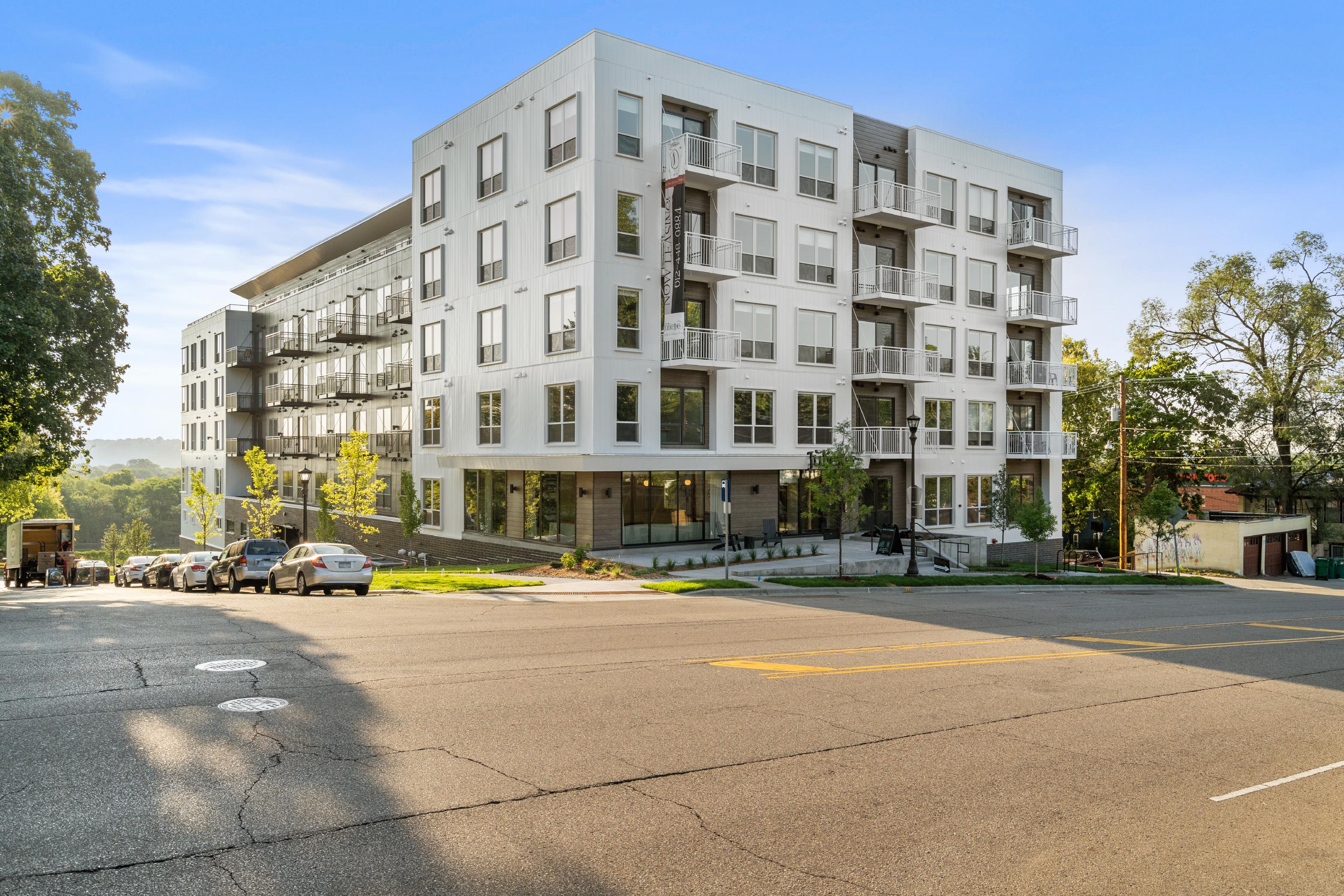
MINNESOTA REAL ESTATE JOURNAL April 2024 49
BRIEFS
multifamily property in Elk River
CBRE has arranged the sale of Granite Shores, a 67-unit multifamily property in Elk River, Minnesota. Gary E. Hegenes purchased the property from Granite Shores, LLC for $12.6 million.
CBRE’s Keith Collins, Ted Abramson, Abe Appert and Drew Rafshol represented the seller in the transaction.
Granite Shores is located at 633 Main St. NW, near the U.S. 10 and 169 intersection and overlooking the Mississippi River. The property was originally built as condominium in 2008 and later converted into a rental property in 2011.
Granite Shores features one- and two-bedroom floor plans averaging 996 square feet and an additional 9,803 square feet of ground-floor commercial space. Community and unit amenities include 116 heated underground apartment and retail parking stalls, in-unit washers and dryers, granite countertops, stainless-steel appliances, balconies, a fitness center, a pet washing station and a large community room with an outdoor deck.
Mid-America Real Estate Corporation closes sale of Burnsville neighborhood center
Mid-America Real Estate Corporation’s Investment Sales Group recently brokered the sale of Burnsville Crossing, a successful neighborhood center in the affluent Minneapolis-St. Paul suburb of Burnsville, Minnesota.
The-97,210-square-foot center was sold to HBI Companies.
Burnsville Crossing is anchored by Becker Furniture & Mattress, a family-owned chain of furniture stores founded in 1978 that has grown to 9 locations throughout the Minneapolis – St. Paul metropolitan area. Burnsville remains one of the most desirable Twin Cities suburbs for its well-connected public transit system, a thriving economy of more than 2,700 businesses, and one of the top-rated public-school districts in Minnesota.
Mid-America Real Estate Corporation Principals
Joe Girardi, Rick Drogosz, and Ben Wineman, in cooperation with Mid-America Real Estate - Minnesota, LLC Vice President Amy Senn, were the exclusive brokers in the transaction on behalf of IRC Retail Centers/DRA Advisors. The property was managed by Pine Tree.
CBRE to tackle leasing duties for pair of Minneapolis-area office buildings
CBRE has been awarded the exclusive leasing assignment for two office buildings totaling 100,000 square feet in suburban Minneapolis.
The two buildings include Maple Grove Executive Center, a four-story, 33,000-square-foot property at 7200 N. Hemlock Lane in Maple Grove, Minnesota; and Carlson Center East II, a two-story, 62,000-square-foot property at 130 N. Cheshire Lane in Minnetonka, Minnesota.
CBRE’s Jerry Driessen and Lexi Magnes will market the combined 17,000 square feet of office space on behalf of ownership, Dahl Real Estate.
Dahl Real Estate recently improved the existing amenity offerings in both buildings with the addition of several enhancements including Wi-Fi, new area seating and finishes in all common areas, new outdoor seating and the implementation of various new and original art pieces.
Minnesota’s Doran Companies names chief construction officer
Bloomington, Minnesota-based Doran Companies has promoted Brent Lindstrom to the role of Chief Construction Officer.
As CCO, Lindstrom will lead all preconstruction and construction for Doran Special Projects, DSP Homes, and Doran Construction. This new leadership role unifies construction operations and further establishes Doran’s commitment to quality.
Over six years ago Lindstrom founded Doran Special Projects, a division dedicated to executing specialized construction projects of all sizes. Under his leadership, DSP has flourished into a thriving operating entity with expertise in diverse project types, from small-scale tenant improvements to multimillion-dollar historic renovations and multifamily mixed-use developments.
Lindstrom recently launched DSP Homes, a MN-licensed residential General Contractor, dedicated to residential developments. DSP Homes’ involvement in transformative projects like The Heights on St. Paul’s East Side exemplifies Lindstrom’s dedication to addressing evolving market demands.
Sherman Associates completes Ladder 260 apartment development in Minneapolis
Sherman Associates has completed Ladder 260, a $34 million affordable housing development at 260 Portland Ave. in the Mill District neighborhood of Minneapolis.
Kraus-Anderson is the general contractor for the multi-phase project for Sherman, which is redeveloping most of an under-utilized city block at Washington Avenue and Portland Avenue. The first phase of the overall $161 million development project was a new $12 million fire station for the City of Minneapolis, which was completed in 2022.
The final phase, called O2, is a 22-story, 240-unit market-rate apartment tower at 250 Portland Ave., expected to be completed in early fall of 2024.
Designed by ESG Architects, Ladder 260 is a six-story, 82,225-square-foot low-rise apartment building, featuring 90 affordable housing units. Amenities include a hotel-like lobby and leasing center, fitness room, 2nd floor lounge and a rooftop deck, bike storage/parking and pet spa. Walk-up units on the street level provide a unique unit type to the market and will enhance the vibrancy along 3rd Street. The location has proximity to light rail and bus routes and is highly walkable and bike-friendly.
KA and Sherman have worked together on several projects that have enhanced the downtown Minneapolis community. Most recently, the 10-story Moment Apartments opened its doors in January 2023. The mixed-use, 222-unit development also includes the Transitional Healing Center for Firefighters For Healing. The center located on the 2nd floor includes 12 fully furnished suites for families of burn survivors, firefighters and first responders traveling to the Twin Cities for care at nearby Hennepin Healthcare.
Ladder 260 is now pre-leasing.
CBRE closes sale of 191-unit multifamily property in Blaine
CBRE has arranged the sale of Berkshire Central, a 191-unit multifamily property in Blaine, Minnesota. Sentinel Management Company purchased the property from BMIRF CENTRAL, LLC for an undisclosed amount.
CBRE’s Keith Collins, Ted Abramson and Abe Appert represented the seller in the transaction.
Berkshire Central is located at 9436 Ulysses Ave. NE, near highways 65 and 10 and 11 miles north of Minneapolis. Built in 2017, the property features a range of studio-, one- and two-bedroom floor plans averaging 889 square feet.
MINNESOTA REAL ESTATE JOURNAL April 2024 50
Community and unit amenities include 384 underground and surface-level parking stalls, in-unit washers and dryers, moveable kitchen islands, custom vinyl plank flooring, a resident club lounge, a communal kitchen., a community garden, a fitness center, a yoga studio and a pool plaza with a sun deck.
Minneapolis’ NAI Legacy boosts multifamily investment sales team
Minneapolis-based NAI Legacy has hired David Kampmeyer as the newest member of its Multifamily Investment Sales team.
As a Brokerage Associate specializing in multifamily properties, Kampmeyer brings a diverse background that will significantly benefit the breadth and width of clients that the multifamily team is able to serve.
Kampmeyer’s professional journey is marked by a remarkable trajectory, beginning with his early involvement in managing and maintaining smaller apartment properties alongside his father. His dedication was further honed at the prestigious West Point Military Academy where he graduated in 2019 with both his Brigade Commander and Minnesota Senator Amy Klobuchar’s endorsements. After the Military, he continued his service at Deloitte as a
Federal Consultant with the Secretary of the Air Force where he exemplified unwavering commitment to his country and within his community.
“My service in the United States Army was one of the greatest accomplishments of my life,” said Kampmeyer, “The Long Grey Line of graduates of West Point that I represent has taught me valuable life lessons about teamwork, dedication, and selfless service. I will apply those skills in serving our real estate clients.” West Point is a highly accredited military academy with a network that spans the globe providing lifelong connections and affiliations to other military professionals.
After his experience on the Federal level, Kampmeyer transitioned to Deloitte in Commercial Human-Capital. He contributed significantly within the Life Science and Healthcare Sector where he worked on Pfizer’s acquisitions, collaborations and divestitures, further underscoring his versatile skill set and strategic acumen.
Most recently, Kampmeyer showcased his leadership as a Project Manager at Enbridge, where he oversaw geohazard pipeline remediation projects totaling over $50M, demonstrating his expertise in development, regulatory compliance, and construction execution.
Beyond his professional accomplishments, Kampmeyer is an avid enthusiast of local festivals, motorcycle riding, scuba diving, and skydiving.
As a member of the National Association of Realtors (NAR), Minneapolis Area of Realtors (MAR), and the Minnesota Commercial Association of Realtors (MNCAR), Kampmeyer is committed to upholding the highest standards of professionalism in the real estate industry. Furthermore, his certification as a SAFe® 5 Agilist exemplifies his application of agility and continuous improvement in his professional endeavors.
Minneapolis’ Knutson Construction names VP of field operations
Minneapolis-based Knutson Construction promoted Sean Dols to vice president of field operations.
The newly created position is part of Knutson Construction’s strategy to strengthen the company’s field operations and trade services.
Dols brings 37 years with Knutson Construction to his new position. He began his career at Knutson in 1987 as a carpenter apprentice. He’s also held foreman and general superintendent positions.

MINNESOTA REAL ESTATE JOURNAL April 2024 51
Sponsorship Opportunities Available! Contact: August Golf Classic August 19, 2024 promote your company at Jeff Johnson jeff.johnson@rejournals.com 612-819-0385 Jay Kodytek jaykodytek@rejournals.com 612-940-3713 Tee off at Noon Rush Creek Golf Club







MINNESOTA REAL ESTATE JOURNAL April 2024 52
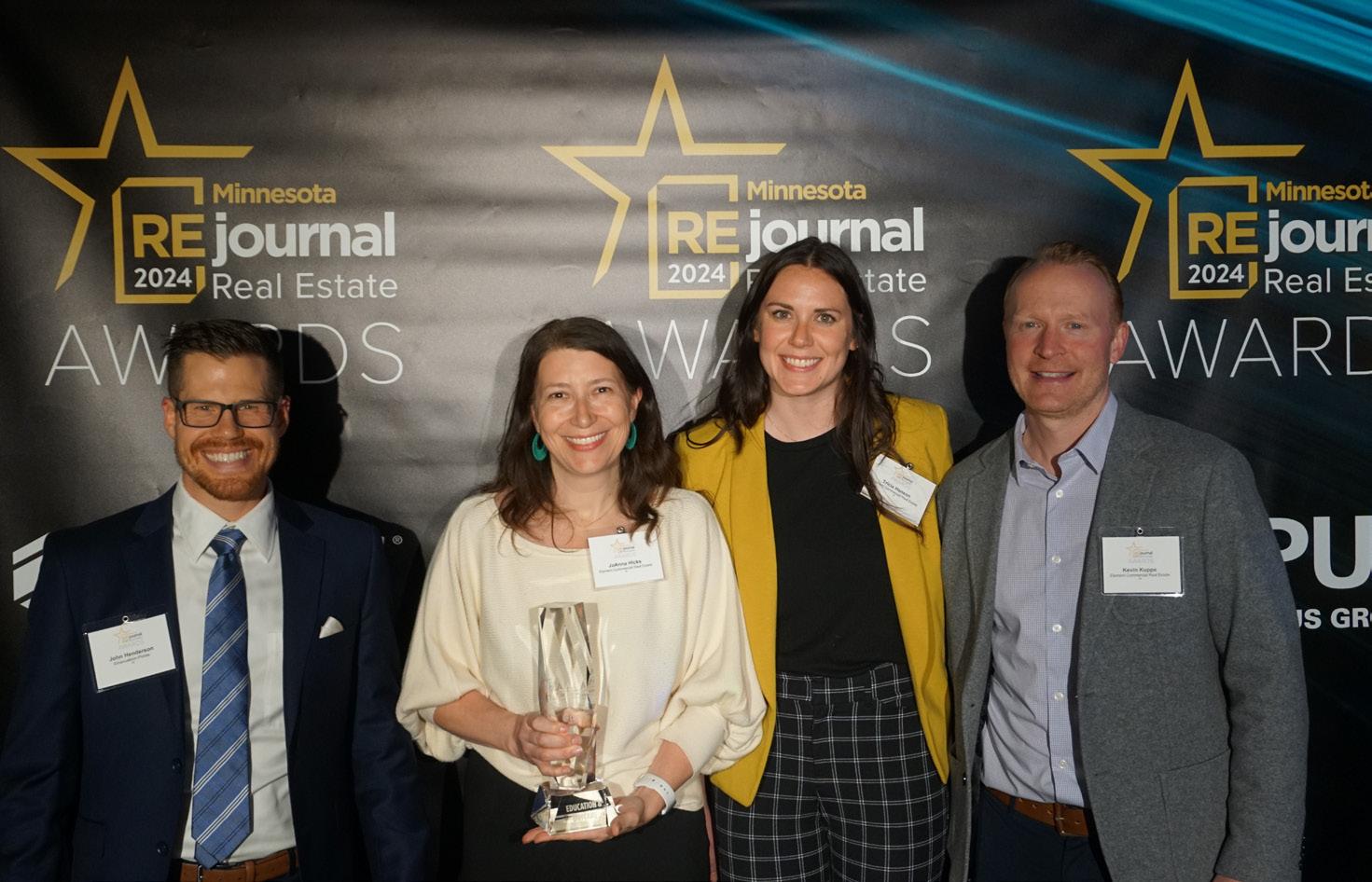







MINNESOTA REAL ESTATE JOURNAL April 2024 53







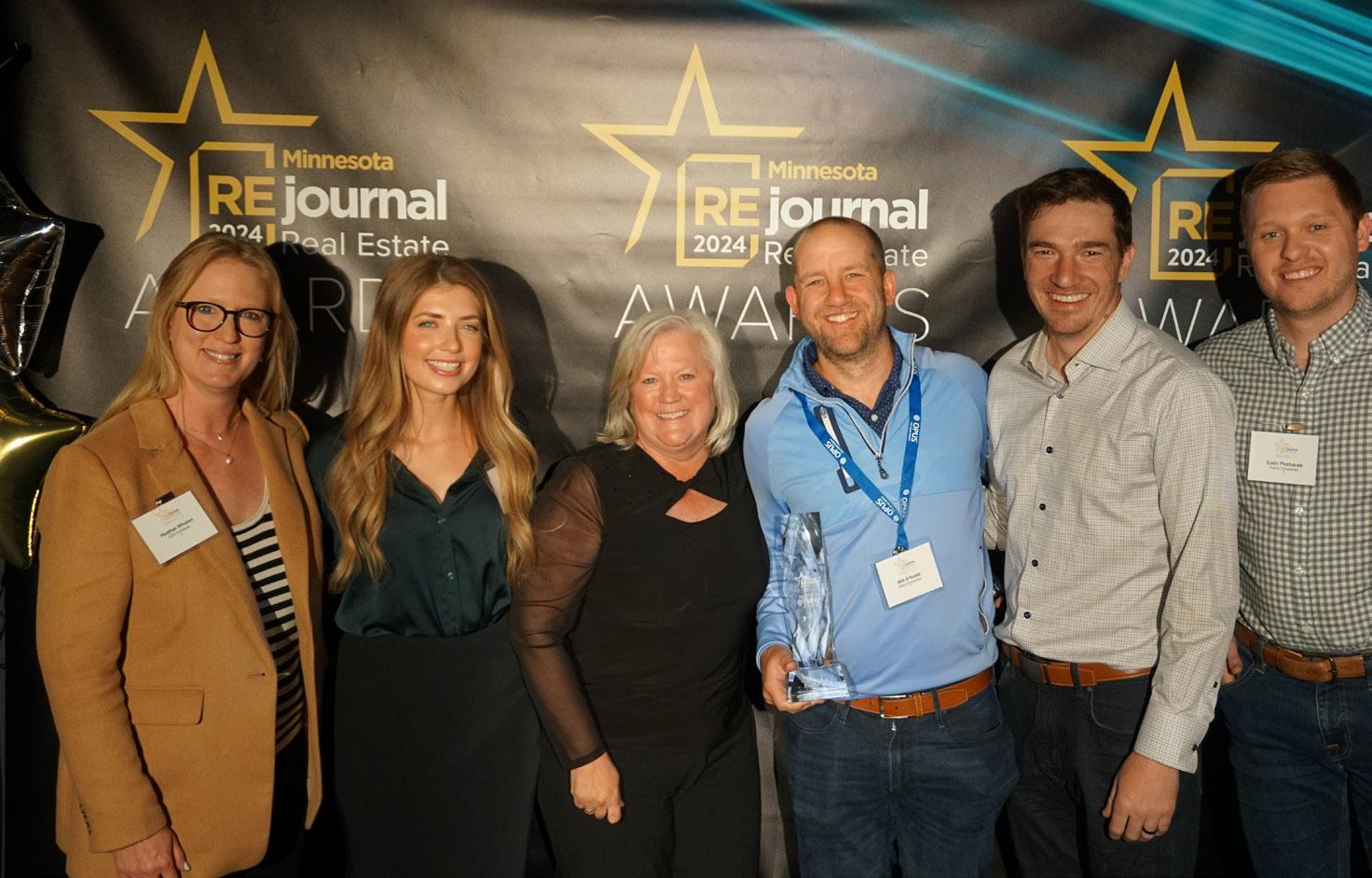
MINNESOTA REAL ESTATE JOURNAL April 2024 54
















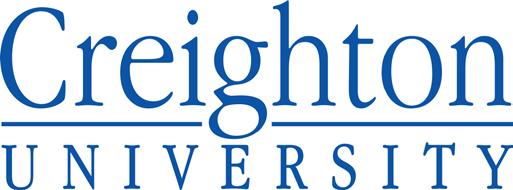






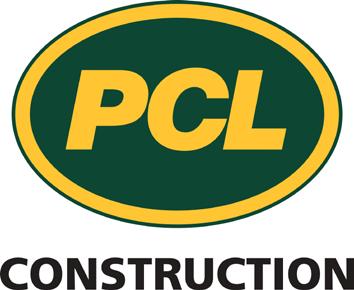




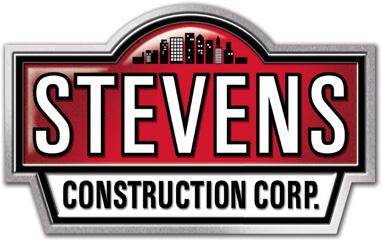



MINNESOTA REAL ESTATE JOURNAL April 2024 55 #mrejawards | #rejournals | Find Us On re_jounrals REjournals THANK YOU TO OUR SPONSORS




MINNESOTA REAL ESTATE JOURNAL April 2024 56 T h e D o ran G r o upUS. c o m Reach out today to tour any of our luxury apartment and townhome communities throughout the Twin Cities. Historic Mpls. Riverfront: MillAndMain.com In the North Metro: TheRubyApts.com TheReserveAtArborLakes.com 610West.com In the West Metro: AriaEdina.com TheMoline.com In the South Metro: TheTripleCrownApts.com MREjournal FINALIST 2024



































 Medical Property of the year
Medical Property of the year






































































































































































